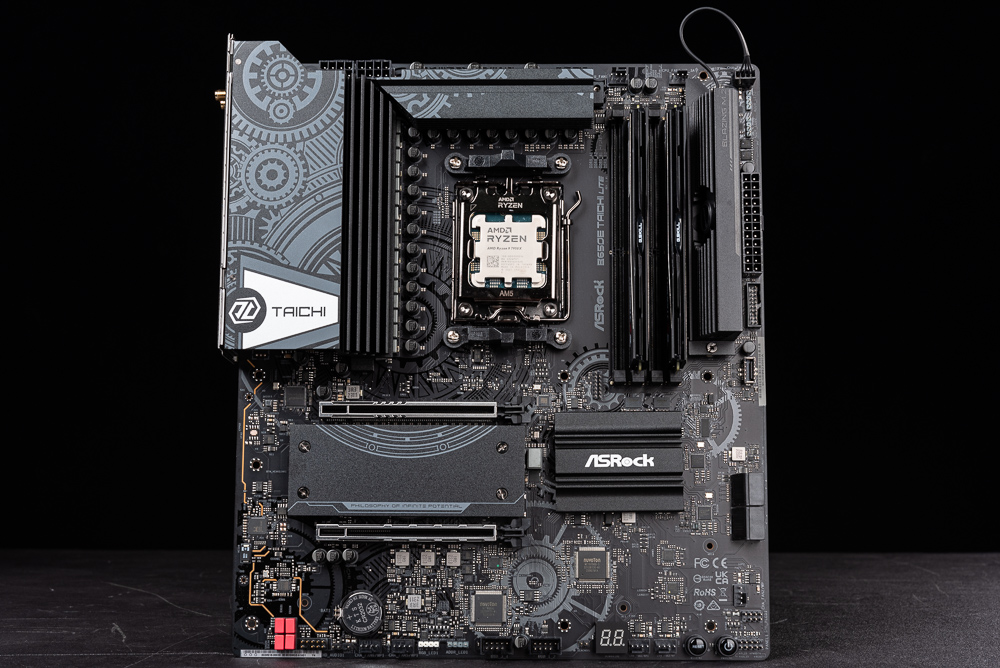
ASRock unveiled the “B650E Taichi Lite” motherboard at this year’s National Electronics Show. This product epitomizes a return to the core goal of simplified heat dispersion. It features a heat sink with a straightforward, flat design, retaining the highly impressive 24-phase 105A power supply, USB 4 Type C, PCIe 5.0, 3 M.2, 2.5GbE + Wi-Fi 6E, and more. These high-end features make it a choice contender for gamers looking for a superior motherboard while preserving cost efficiency.
Technical Specifications:
The size of the motherboard is E-ATX 30.5 x 26.7cm and it has an 8-Layer PCB. It supports the AMD Ryzen 7000 processor with a Socket AM5 pin layout. The CPU power supply is a robust 24+2+1 Phase 105A SPS. The motherboard is equipped with an AMD B650E chipset and a 1 x 256Mb ROM, UEFI AMI BIOS.
The motherboard accommodates 4 x DIMM, with a maximum of 128GB, and DDR5 6600+(OC)/4800 MHz memory. It also supports XMP and EXPO. The display output is HDMI 2.1, USB 4 Type-C.
For expansion, the motherboard offers 1 x PCIe 5.0 x16, 1 x PCIe 4.0 x16 (x4) slots. Storage options include 4 x SATA 6Gb/s, Blazing M2_1 (CPU) PCIe 5.0 x4, Hyper M2_2 PCIe 4.0 x4, and Hyper M2_3 PCIe 4.0 x4 ports.
The motherboard is equipped with a Killer E3100G 2.5GbE network card, Wi-Fi 6E 802.11 ax 2×2, and BT 5.3. The onboard audio is provided by a Realtek ALC4082 audio chip and an ESS SABRE9218 DAC with a 130dB SNR.
The USB offerings include 1 x USB 3.2 Gen 2×2 Type C (Front Expansion), 1 x USB 4 Type C, 3 x USB 3.2 Gen 2, 10 x USB 3.2 Gen 1 (2 for expansion), and 4 x USB 2.0 (4 for expansion).
For RGB lighting, there are 3 x ARGB 4-1 pins and 1 x RGB 4pin. Cooling is managed by 1 x 4-pin CPU, 1 x 4-pin CPU/PUMP, and 6 x 4-pin Chassis/PUMP fans.
Unveiling and pricing details for the ASRock B650E Taichi Lite without pursuing over-the-top heat management solutions
At this year’s International Computex, ASRock showcased two new motherboards, the Z790 Taichi Lite, and the B650E Taichi Lite. Both models possess full specifications but feature an updated heat sink design to reduce cost and increase value for money. However, it seems that only the B650E Taichi Lite will hit the Taiwan market. The decision not to release the X670E version is mainly due to its dual-chipset requirement, making it relatively costlier. Consequently, the more economical Taichi Lite version was introduced with the B650E.
In terms of design, the B650E Taichi Lite comes across as more affordable compared to the original B650E Taichi. It trades the original over-the-top VRM heat sink, connected by heat pipes, for two standalone VRM radiators and a simple flat gear pattern design. The previously exaggerated gear PCH heat sink and broad armor have been entirely dropped, and the PCH heat sink reverts to a simplistic aluminum extrusion shape. The metallic backplane and RGB lights on the rear have also been removed.
Despite the more basic aesthetic of the B650E Taichi Lite, it retains high-end specifications like the CPU 24+2+1 phase 105A SPS power supply, USB 4 Type-C, PCIe 5.0 x16, support for three M.2 expansions including 1 PCIe 5.0 x4 SSD, Killer E3100G 2.5GbE + Wi-Fi 6E, front USB 3.2 Gen 2×2, and a total of 19 available USB ports. These hardware specifications match the original version, making it an undeniable performance-for-price champion, assuming it’s priced reasonably.
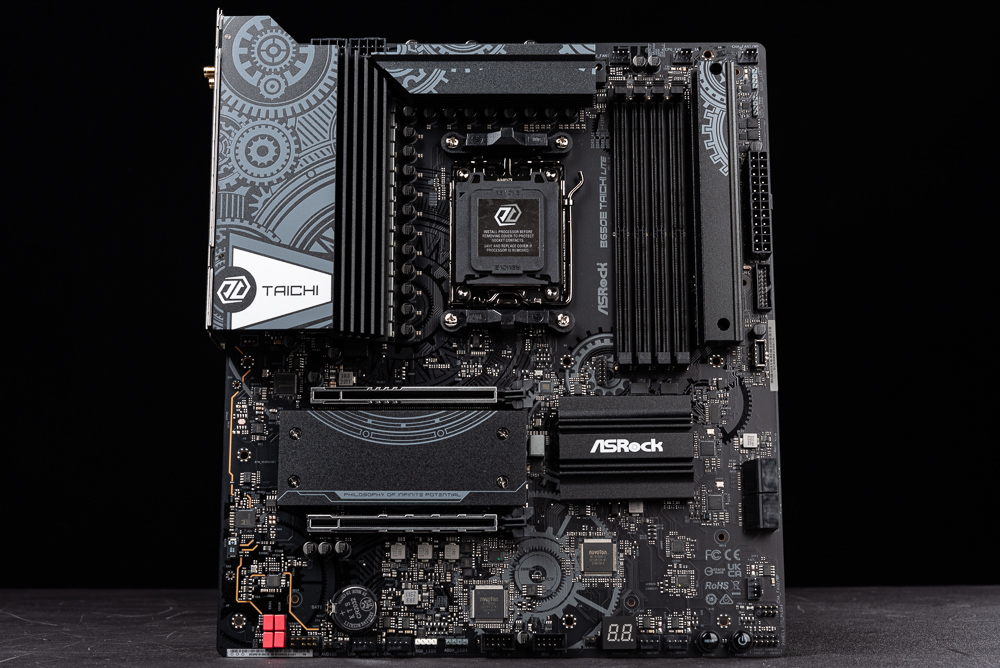
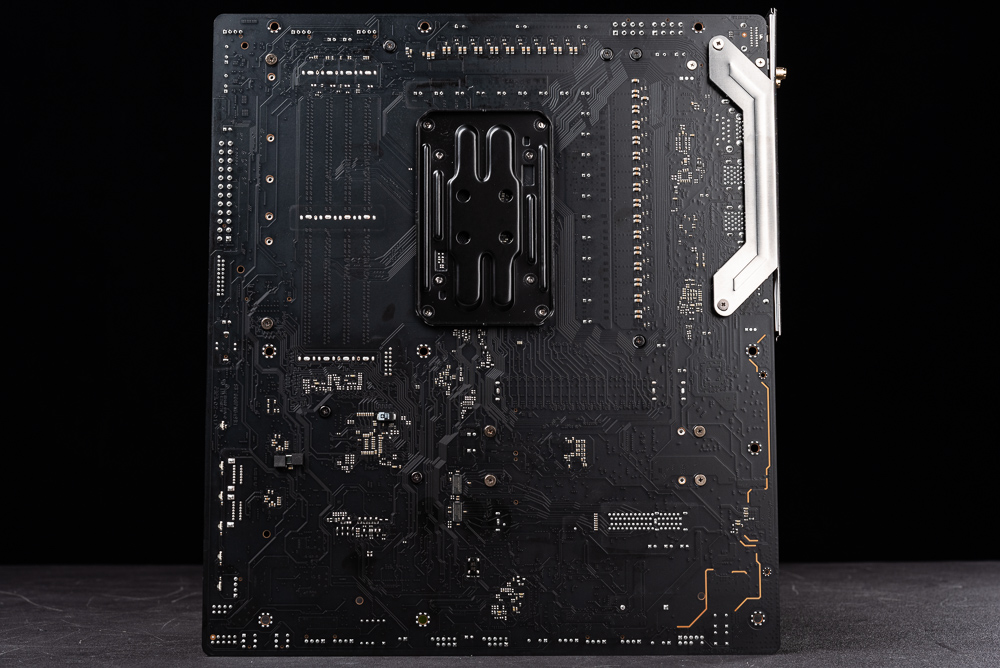
Besides the four DIMM DDR5 memory slots situated at the top-right corner of the B650E Taichi Lite motherboard, it also includes a Blazing M2_1 that supports CPU PCIe 5.0 x4 channels. This area additionally houses front USB 3.2 Gen 2×2 Type C, USB 3.2 Gen1, a 24-pin motherboard power supply, and sockets for ARGB, RGB, and FAN.
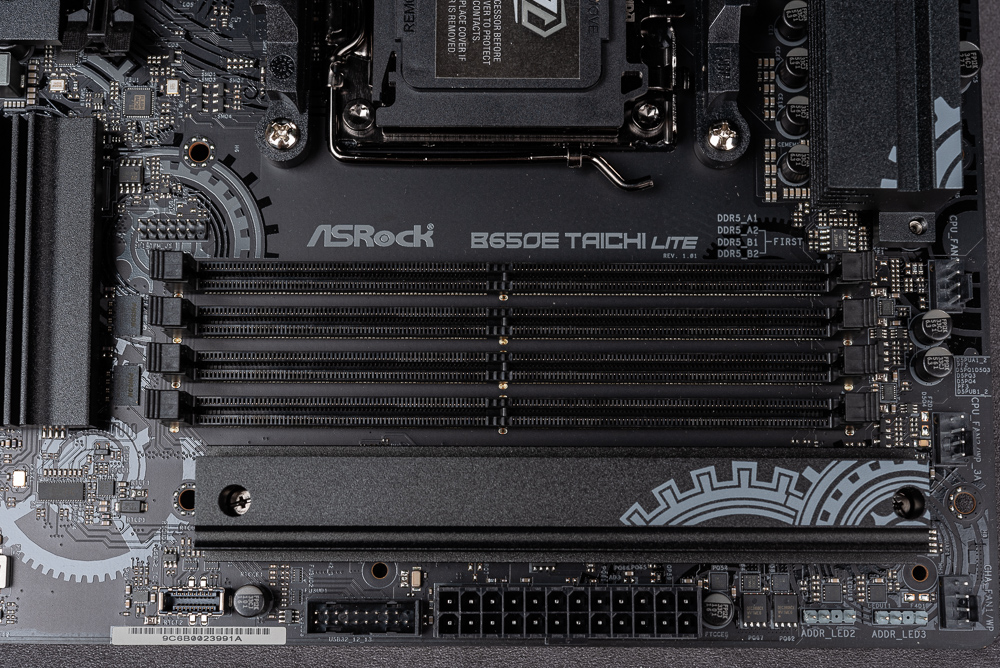
The AMD AM5 processor socket on the B650E Taichi Lite motherboard is compatible with AMD Ryzen 7000 processors. Surrounding the CPU are 4+2+1 phase 105A SPS power supplies designed to meet the power needs of the high-core Ryzen 7000. For VRM cooling, the motherboard uses two aluminum extruded heat sinks, with the left sink extending above the rear I/O as well.
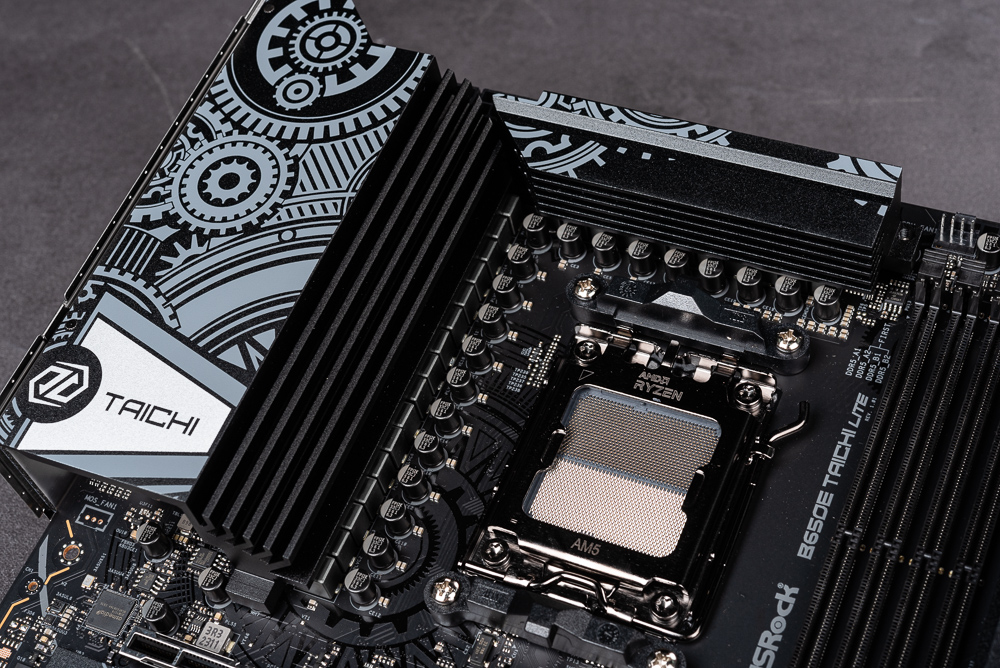
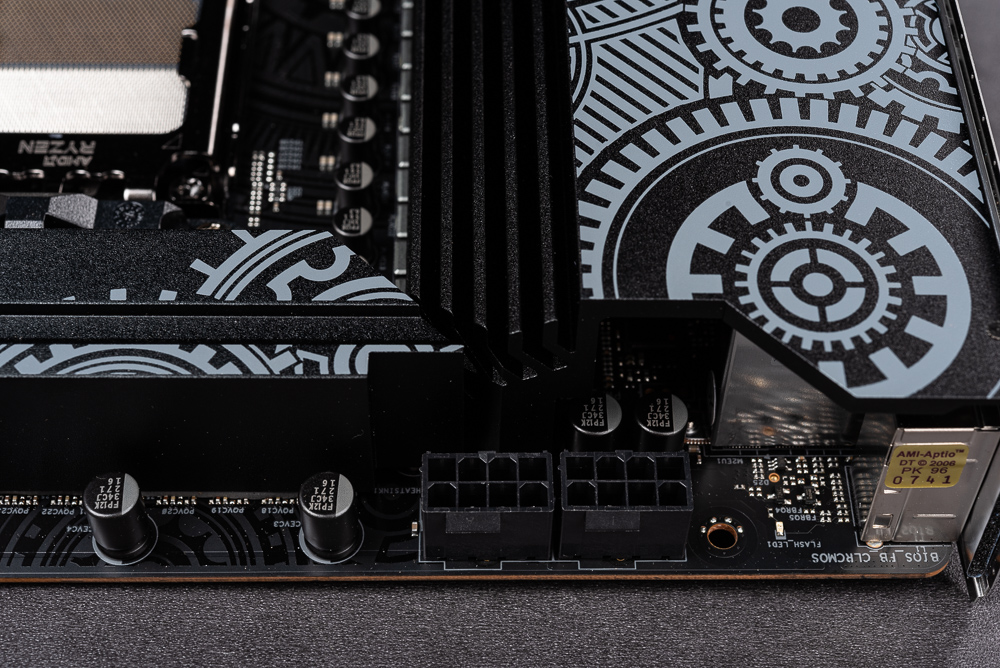
While the B650E Taichi Lite boasts impressive specifications, it comes with only 4 SATA ports. This may suffice for general usage, but it would be more fitting for a high-end motherboard to feature at least 6 SATA ports.
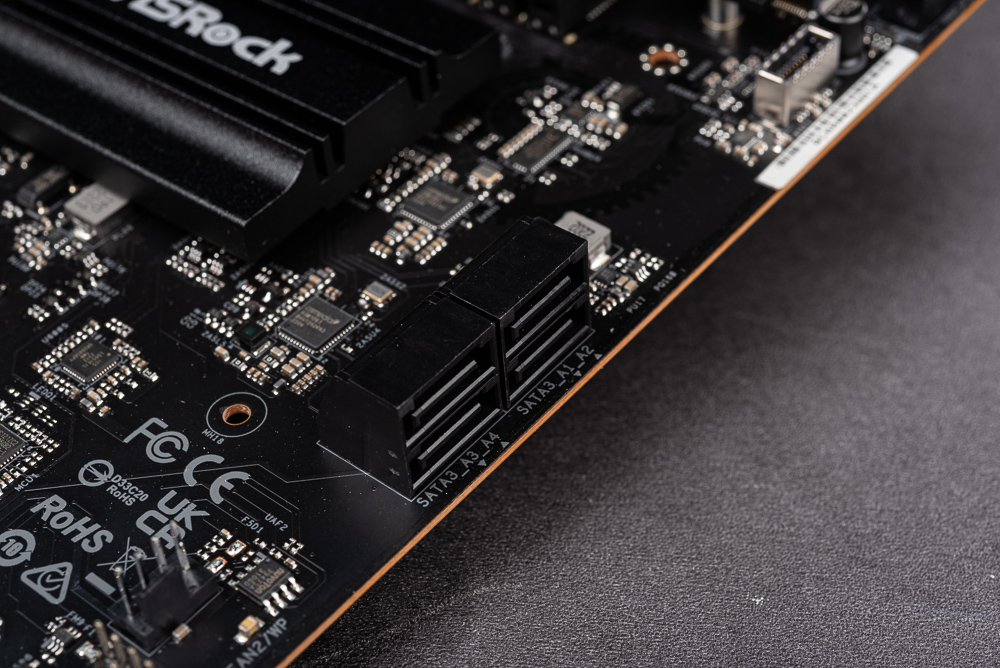
The B650E Taichi Lite motherboard’s PCIe slots mainly consist of a first PCIe 5.0 x16 slot for graphics card expansion and a second one that leverages the PCH channel to offer PCIe 4.0 x4 interface card expansion. Along the lower edge of the motherboard, from left to right, are functionalities such as front audio input, FAN, ARGB, RGB, USB 2.0, Debug Code, FAN again, reset and power on buttons, and front panel pins.
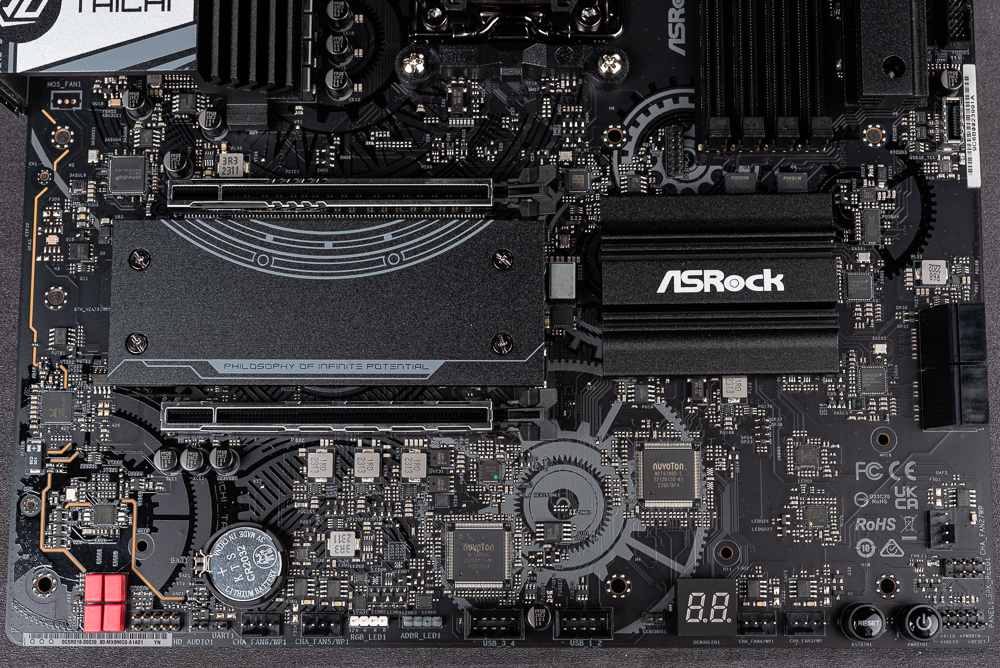
The B650E Taichi Lite motherboard features three M.2 slots for expansion. The first, located in the upper right corner, is a Blazing M2_1 that utilizes the PCIe 5.0 x4 bandwidth of the CPU channel and comes with a dedicated heat sink. The second and third, labeled Hyper M2_2 and M2_3, are placed between the PCIe slots, both of which support PCIe 4.0 x4 SSDs.
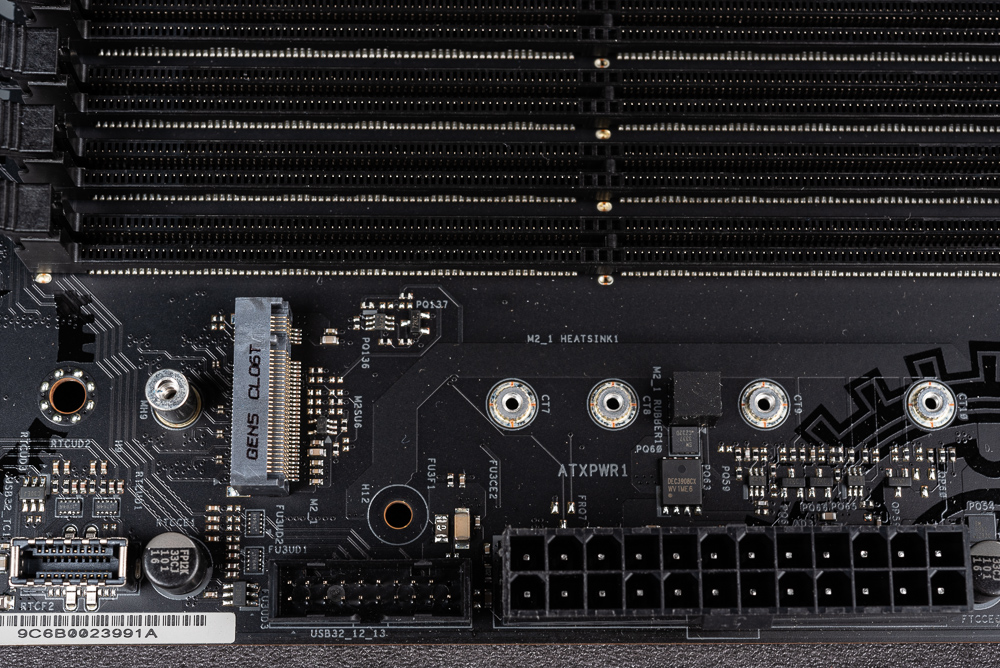
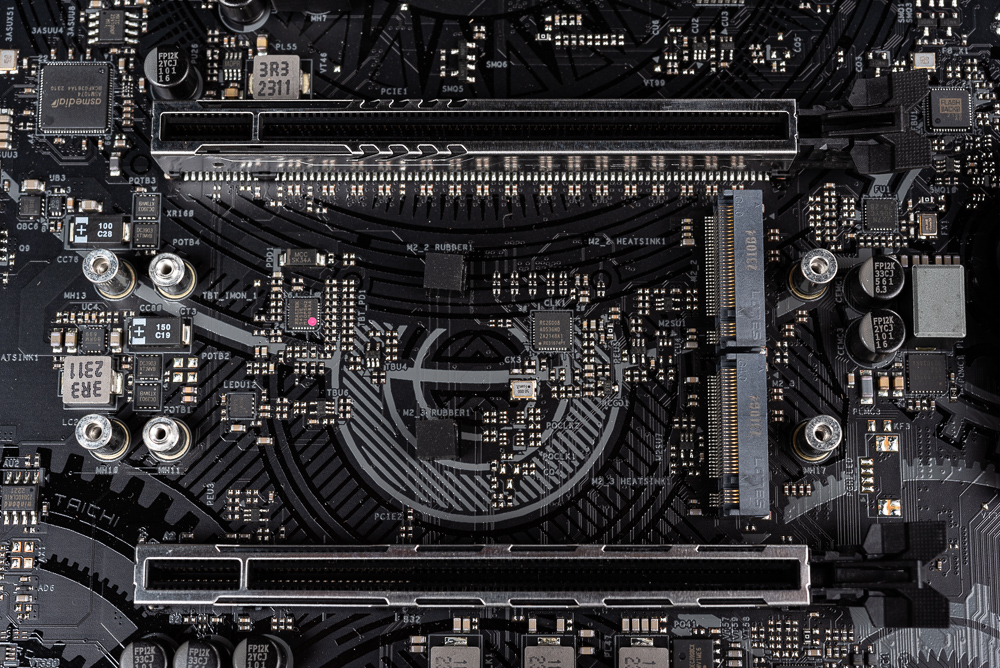
The back I/O of the B650E Taichi Lite motherboard continues with an integrated bezel design, offering BIOS Flashback and Clear CMOS buttons. It has 2 USB 3.2 Gen2 Type A (yellow) Lightning Gaming Ports, 8 USB 3.2 Gen1 ports, and a USB4 Type-C port that supports USB PD 3.0 9V3A/27W or 5V3A/15W fast charging.
There are built-in HDMI and USB4 Type C outputs for display, 2 antenna ports, a 2.5GbE LAN RJ-45 port, and 3.5mm ports for microphone/headphone and SPDIF audio output, among other features.
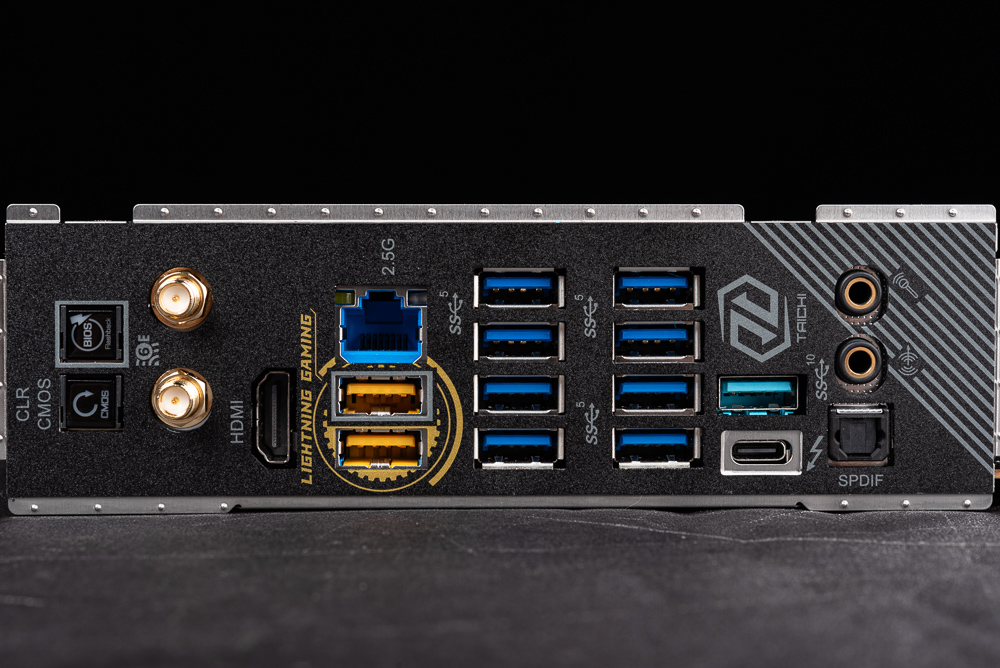
The material and board design of the ASRock B650E Taichi Lite motherboard remain unchanged, but there’s an increased emphasis on gear pattern detailing
The B650E Taichi Lite motherboard shares the same foundation as its predecessor, the main distinction being the additional gear patterns on the circuit board in the new model. To scrutinize the components and design of the motherboard, we need to remove the VRM, M.2/PCH, and other heat sinks. To delve into these finer details, I’ll be taking apart the motherboard for a more thorough exploration.
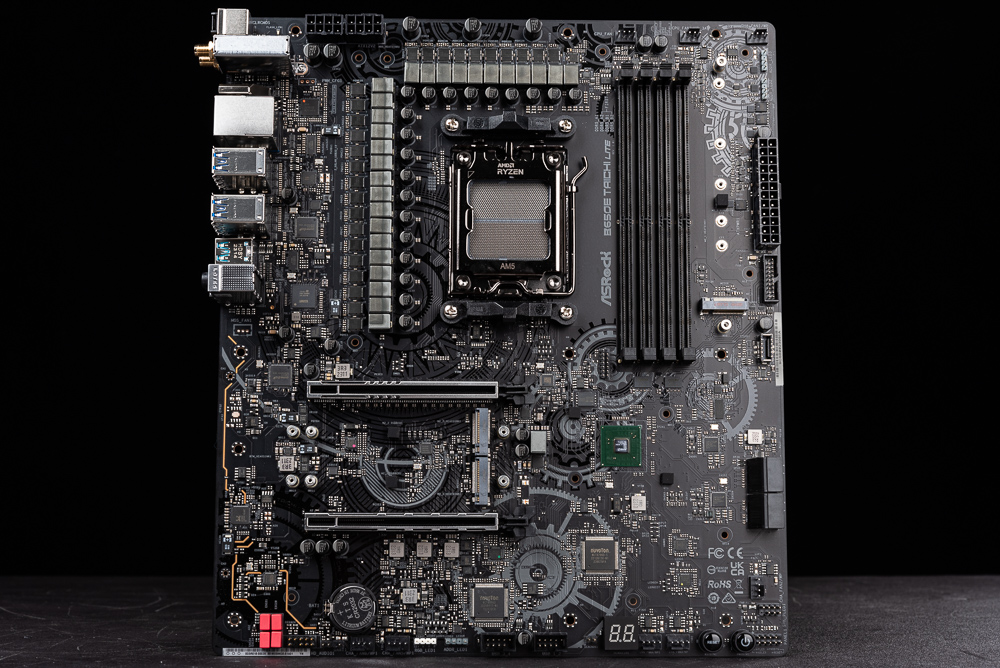
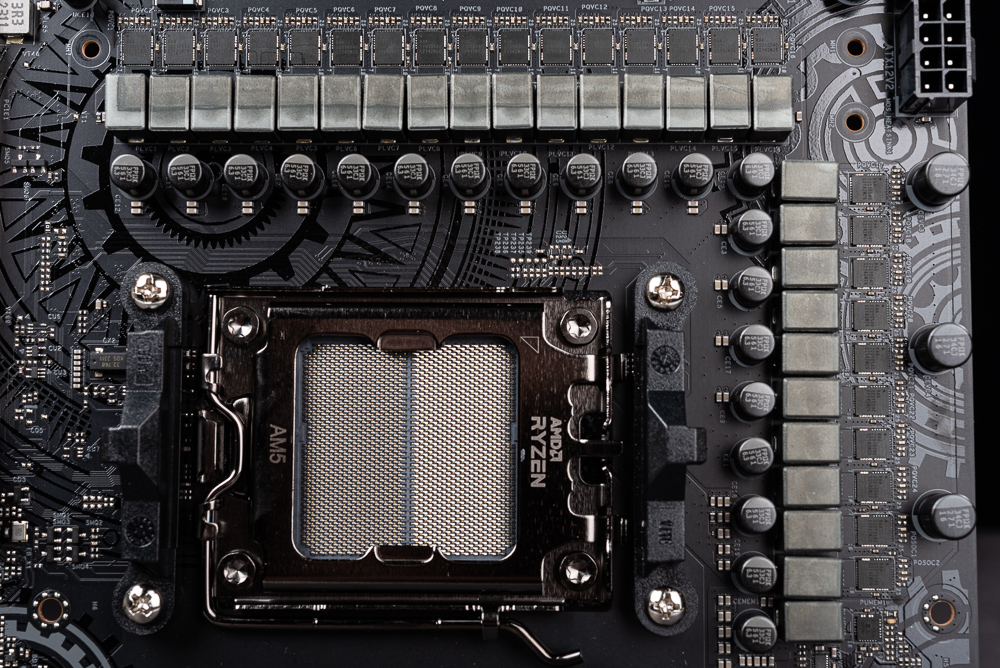
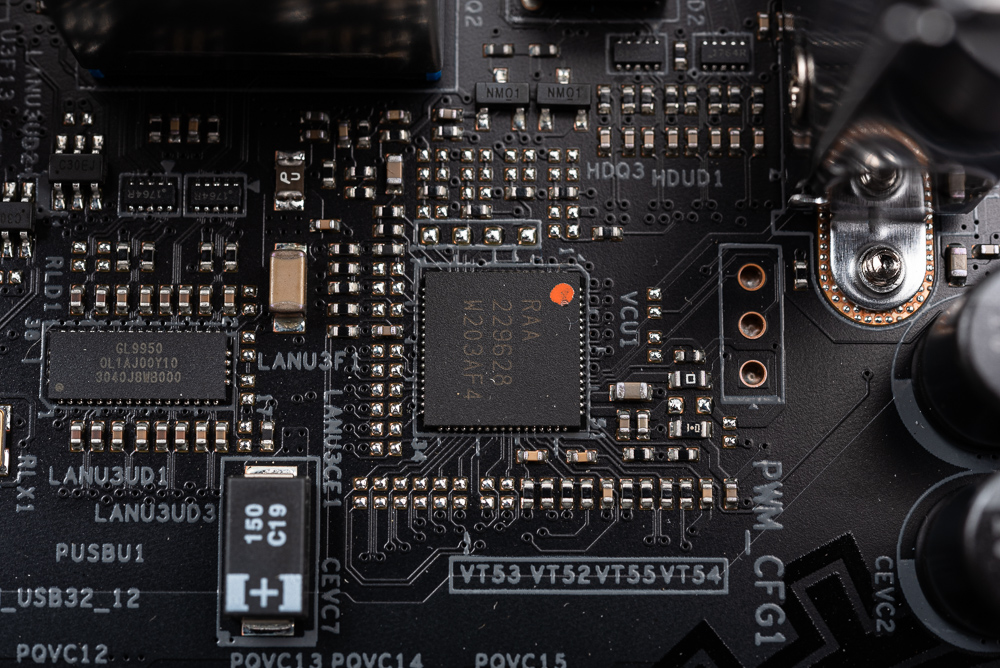
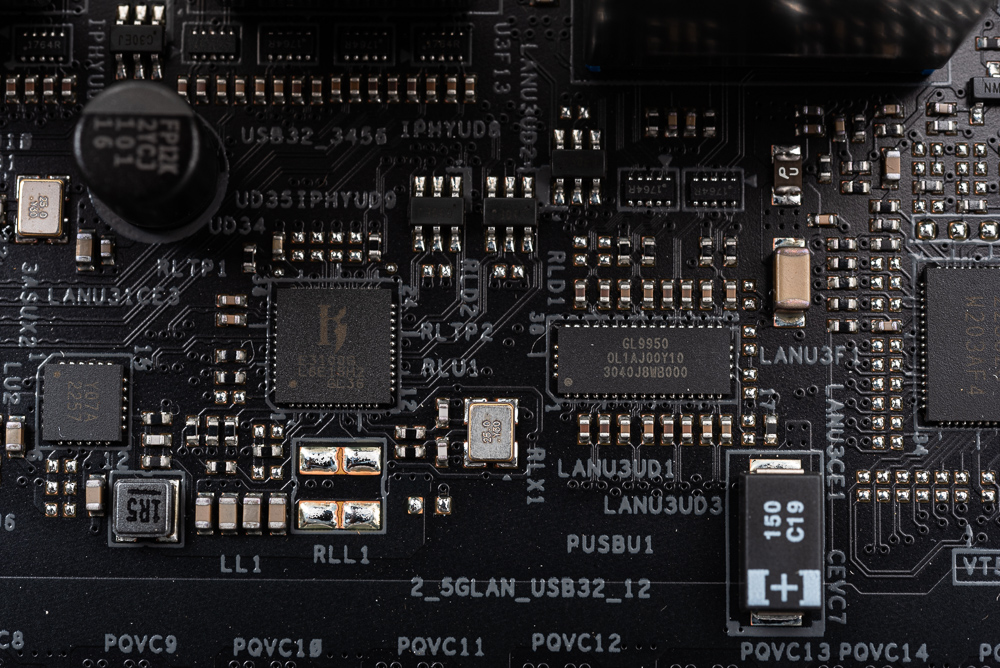
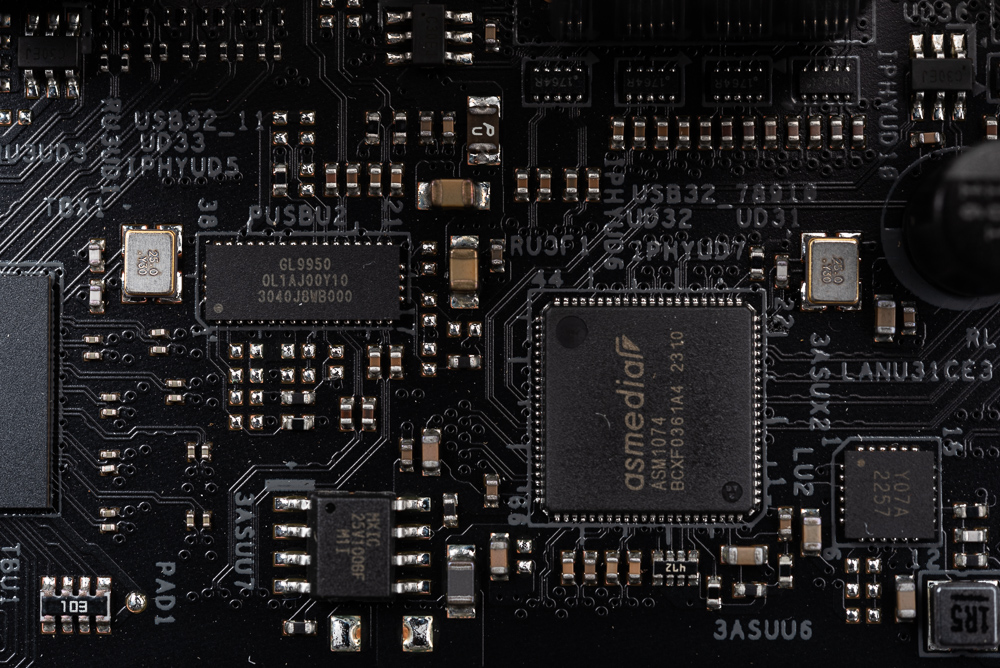
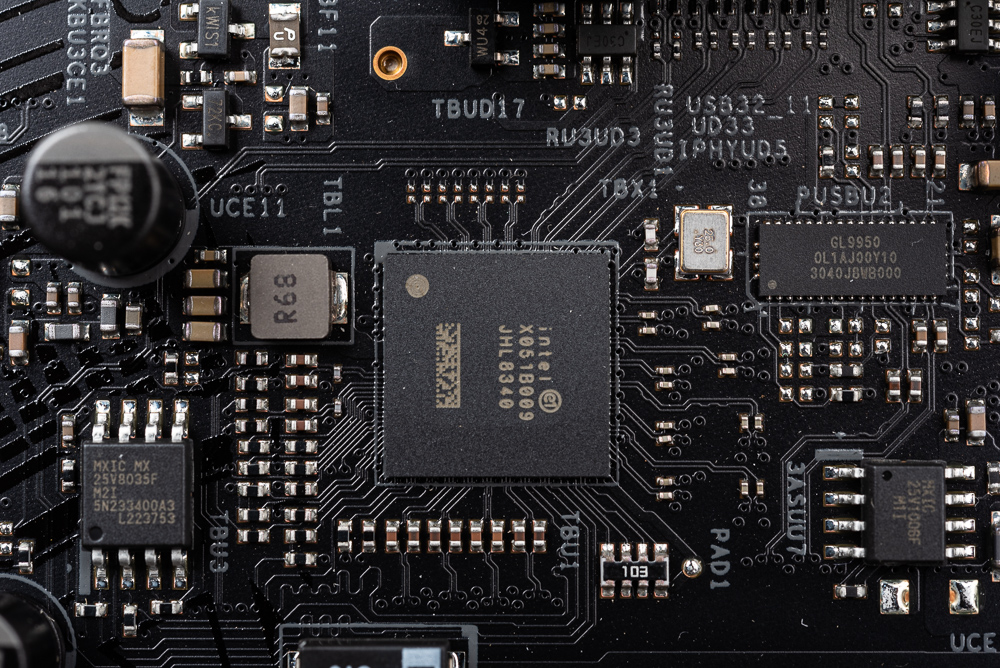
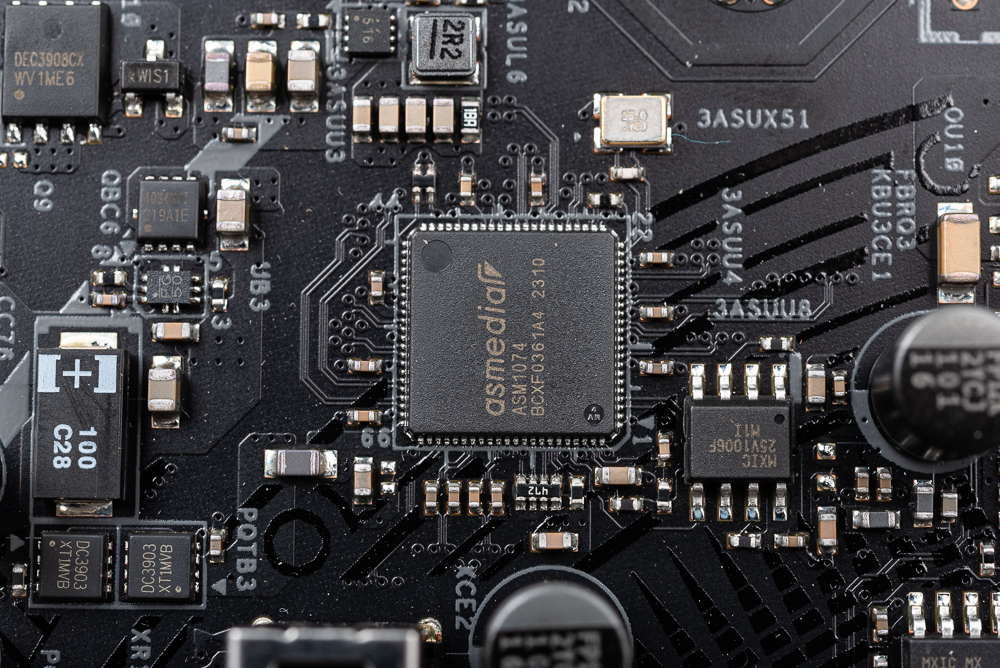
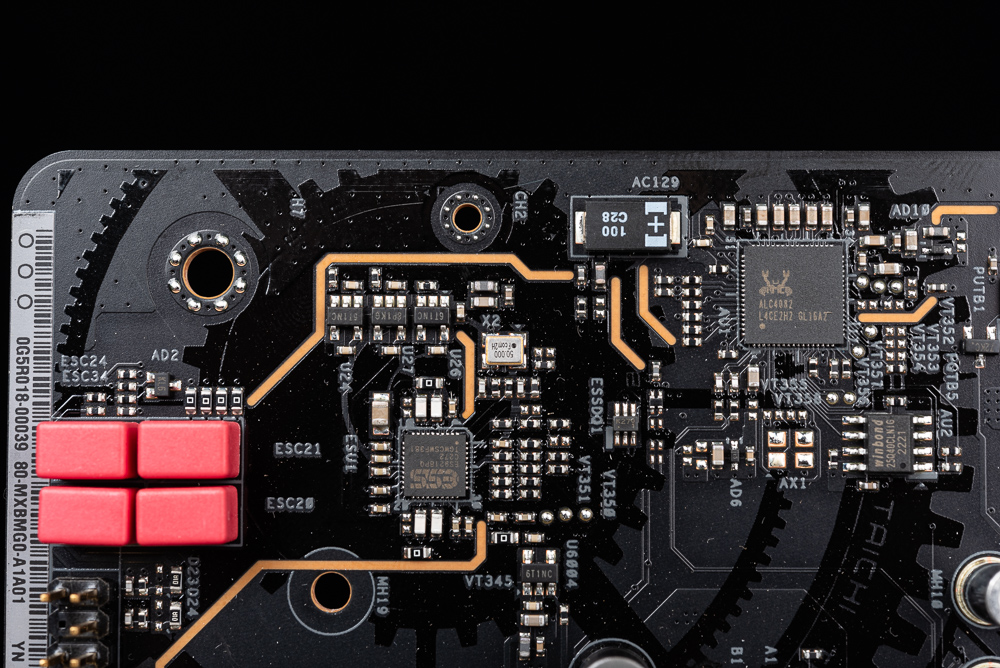
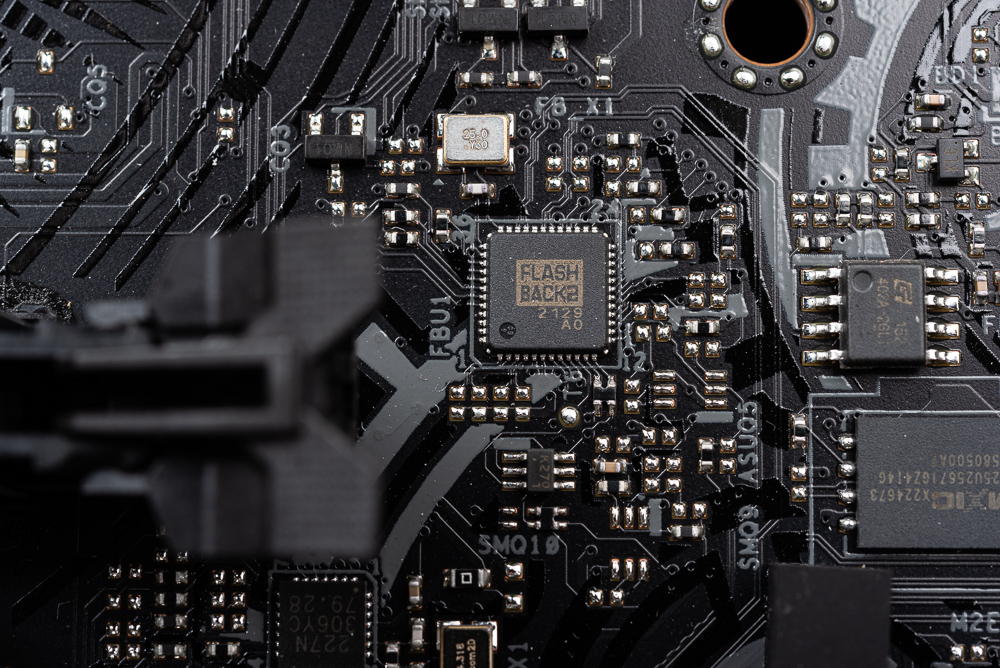
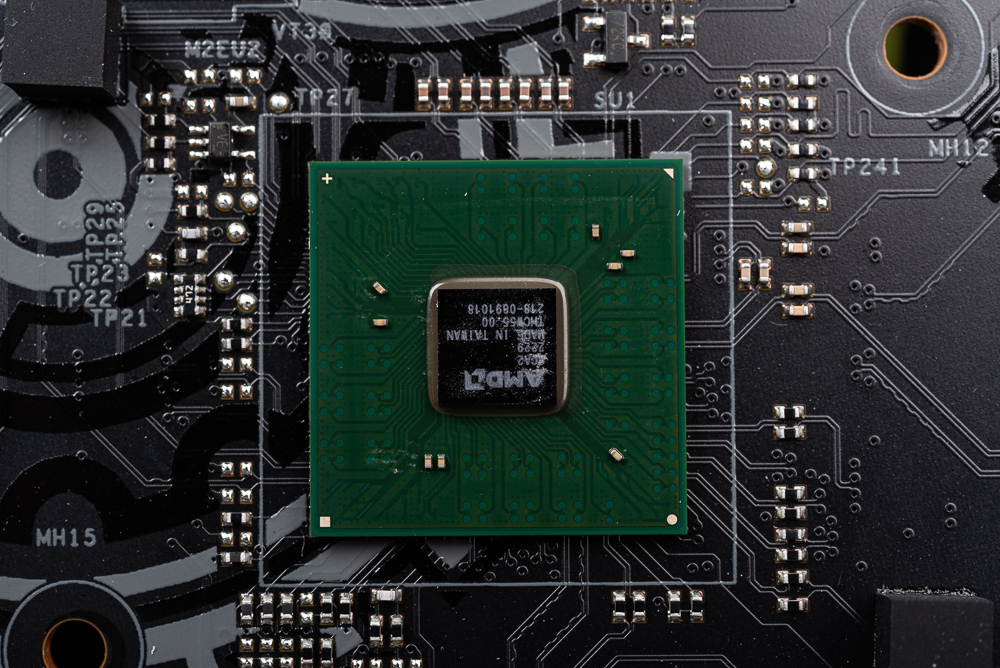
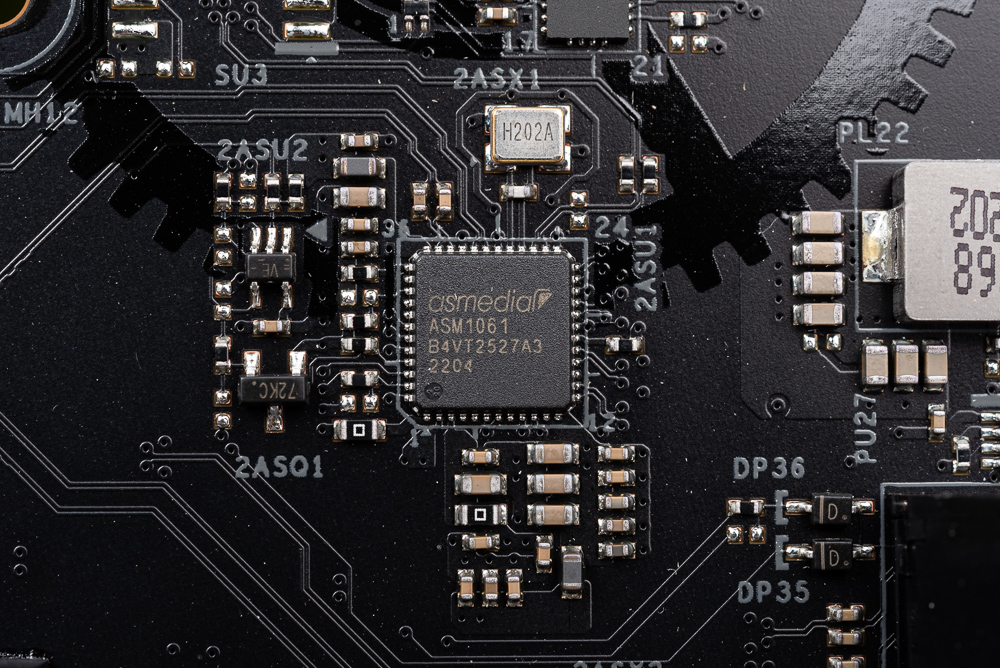
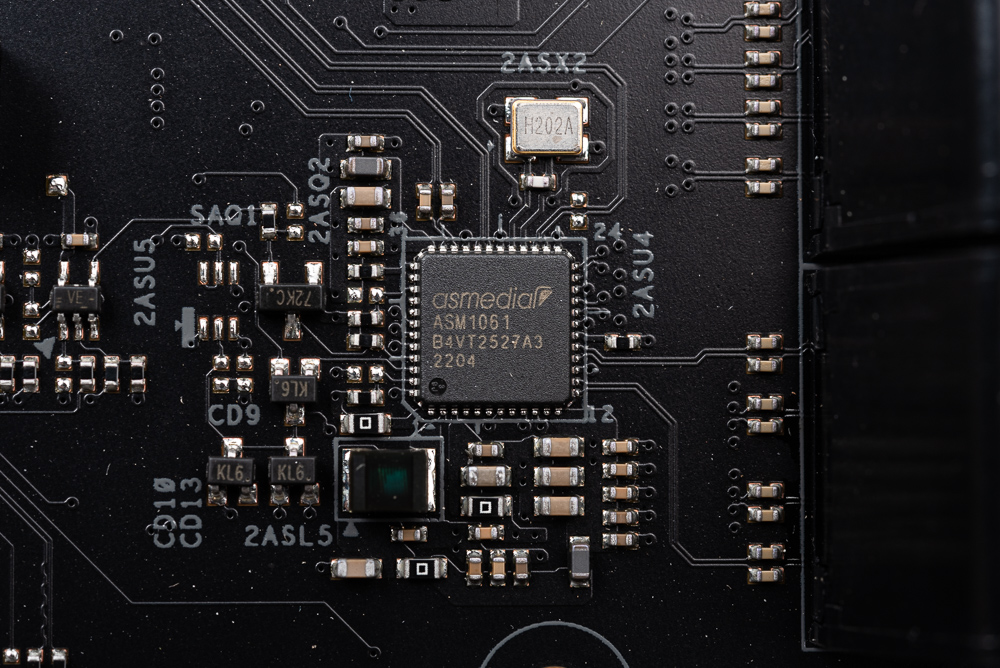
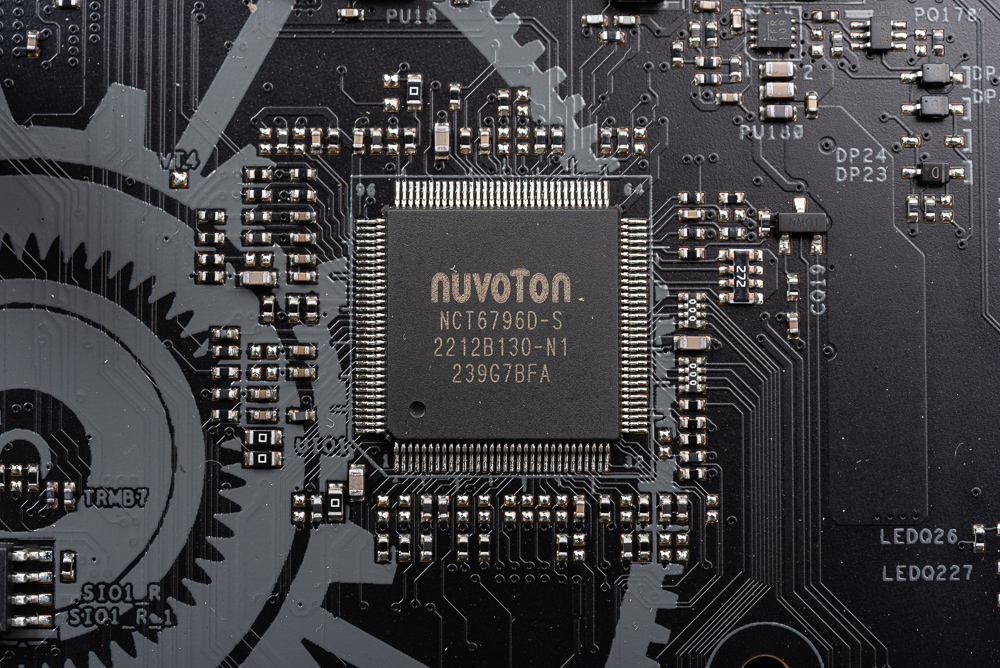
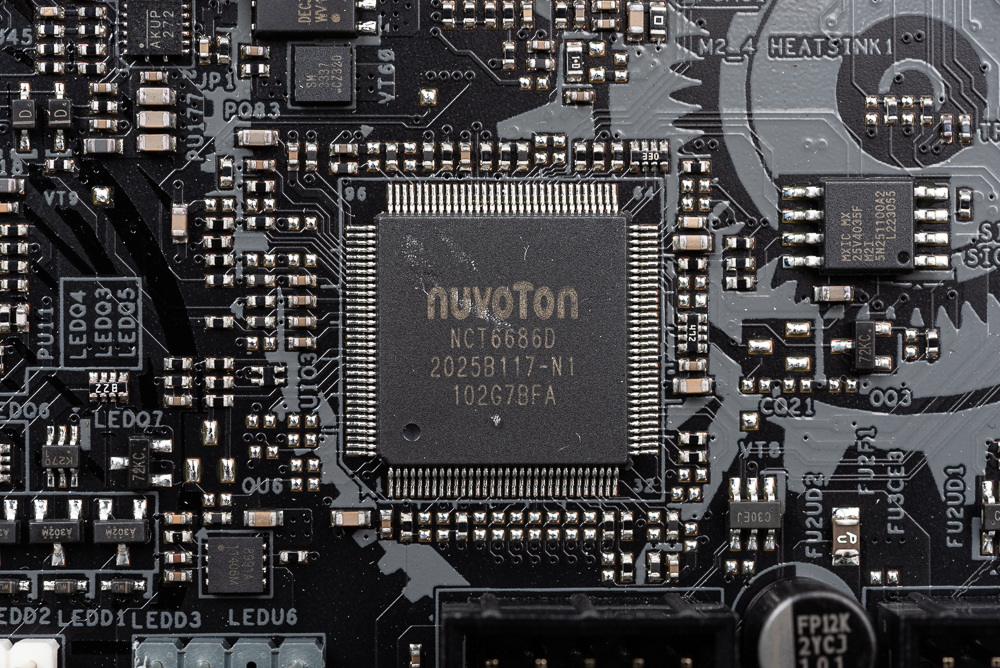
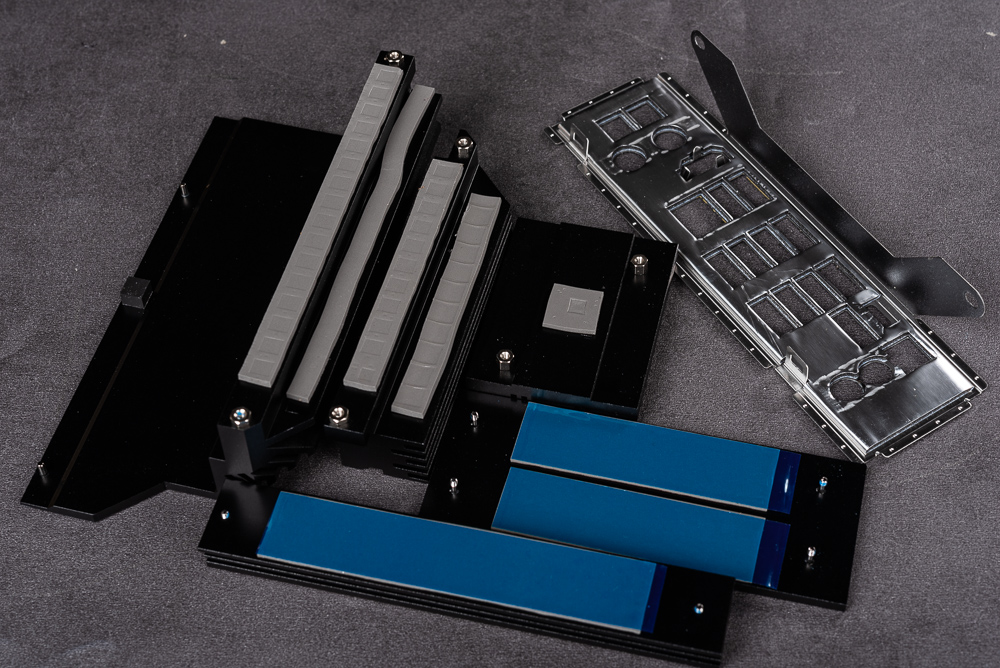
ASRock B650E Taichi Lite Accessories/ Optional M.2 Fan Heatsink
The accessories for the B650E Taichi Lite motherboard encompass basic SATA cables, antennas, M.2 screws/copper pillars, a USB 2.0 HUB, among others. In addition, ASRock offers an optional “M.2 fan heat sink” for purchase. This high, aluminum extruded heat sink includes a built-in PWM fan, capable of delivering active cooling to the PCIe 5.0 SSD, thereby ensuring steady SSD performance.
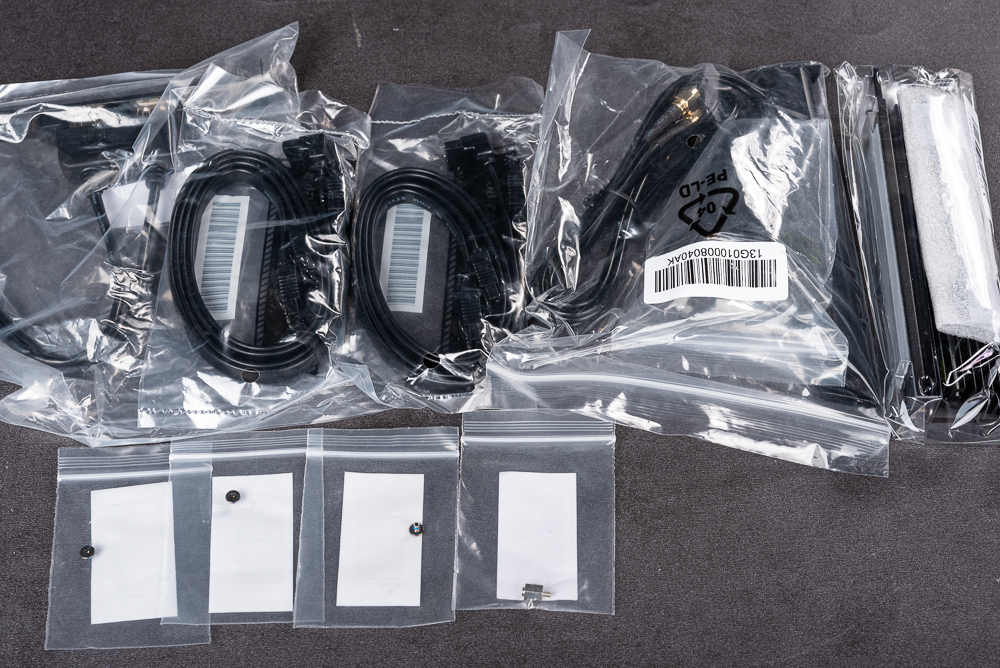
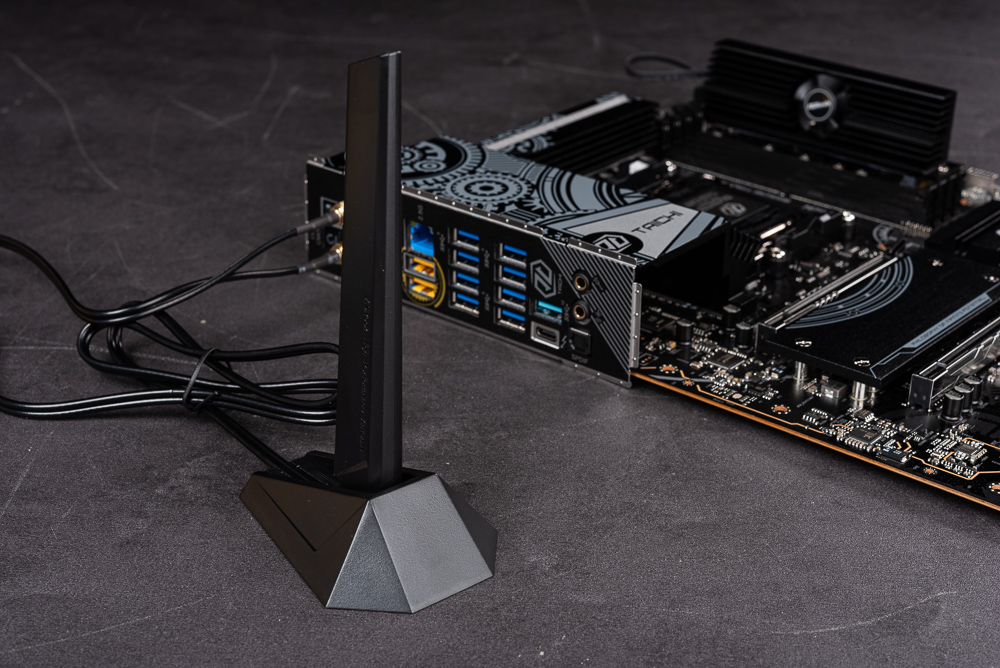
The optional “M.2 fan heat sink” stands approximately 3.5cm tall. It features a gear coating typical of the TACHI brand on the back, while the front is adorned with an array of aluminum extruded cooling fins. At the center is a compact PWM cooling fan, all designed to guarantee ample cooling performance for the PCIe 5.0 SSD.
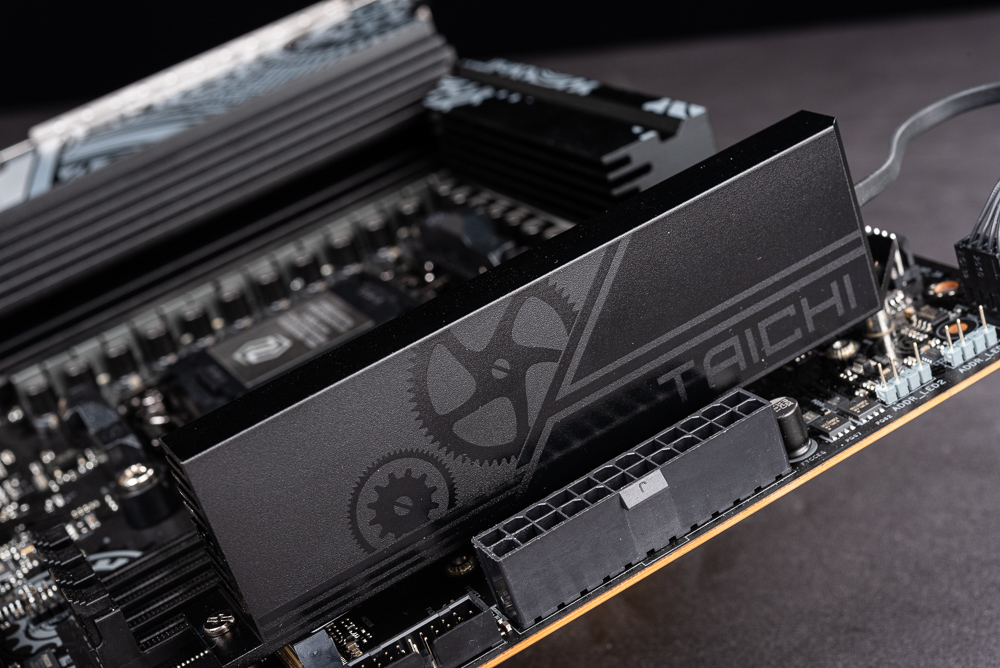
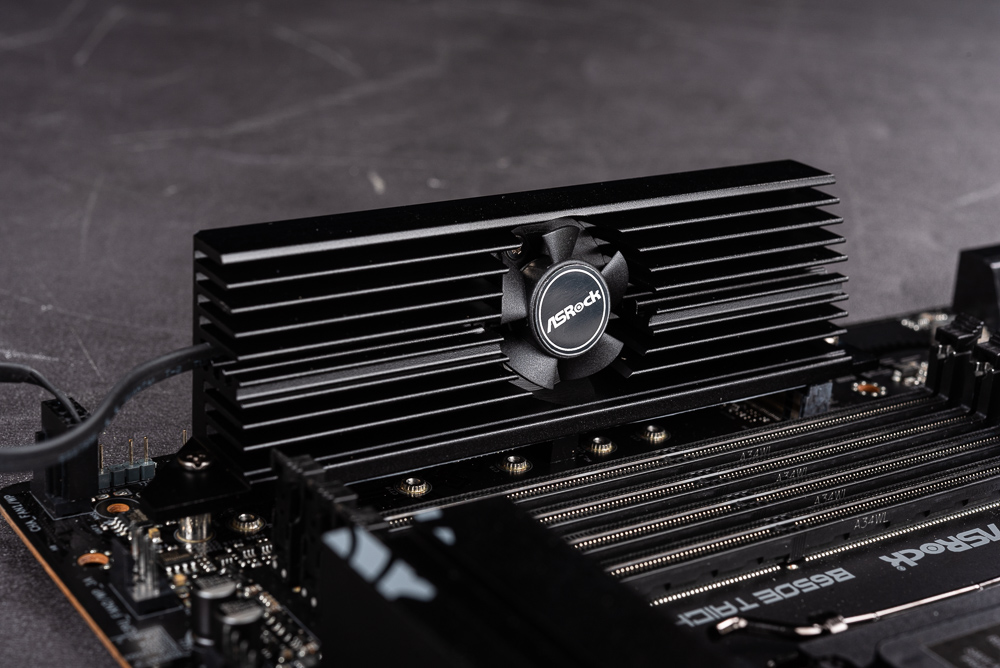
ASRock B650E Taichi Lite BIOS Function/Performance Default PBO On and Limit Temperature Drop Over
In terms of BIOS functionalities, the B650E Taichi Lite mirrors its predecessor, the original B650E Taichi. The primary features are the Performance Preset settings in OC Tweaker, which include options for enabling PBO, setting a maximum junction temperature (Tjmax) of 85°C, and configuring Curve Optimizer for step-down overclocking. The DRAM Profile setting allows the application of memory EXPO or XMP parameters, in addition to features like DRAM voltage overclocking.
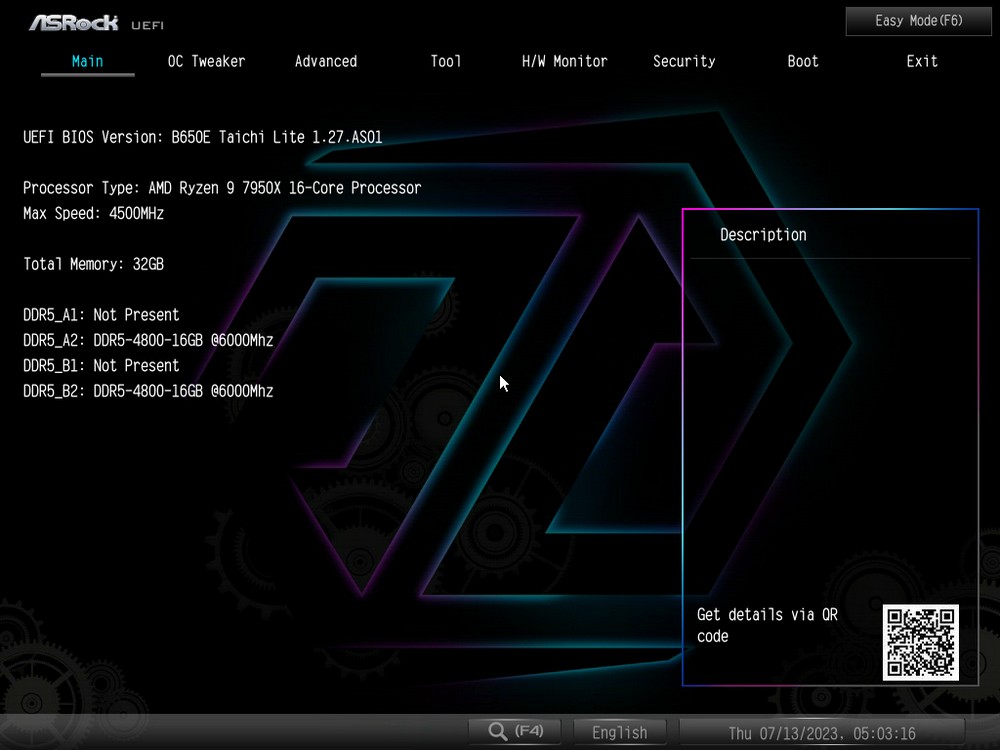
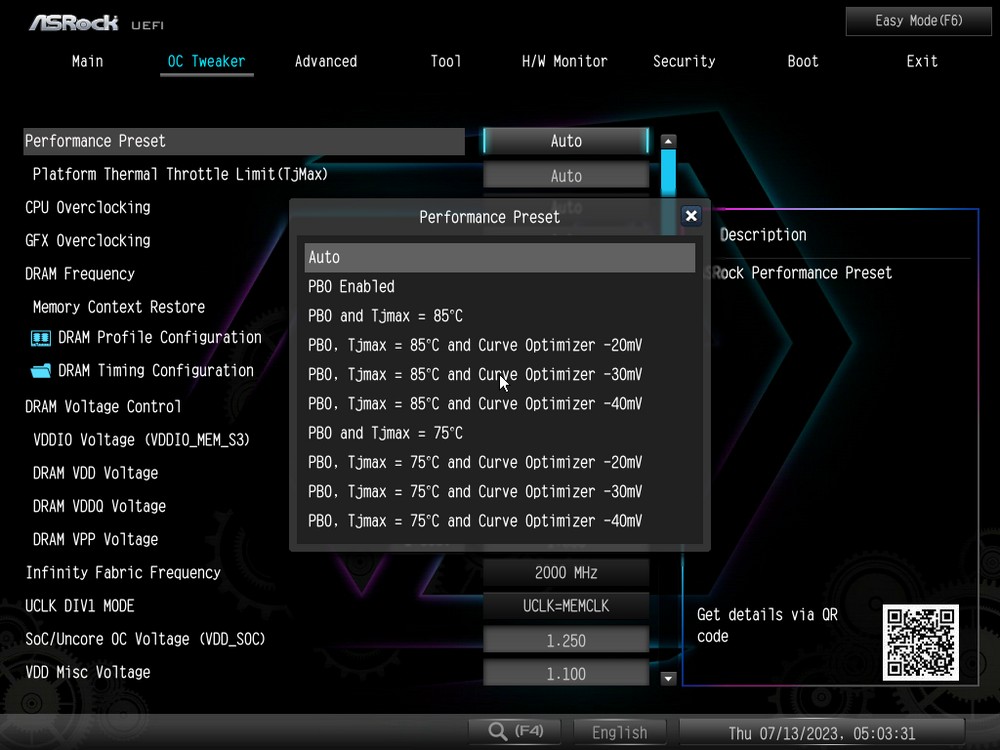
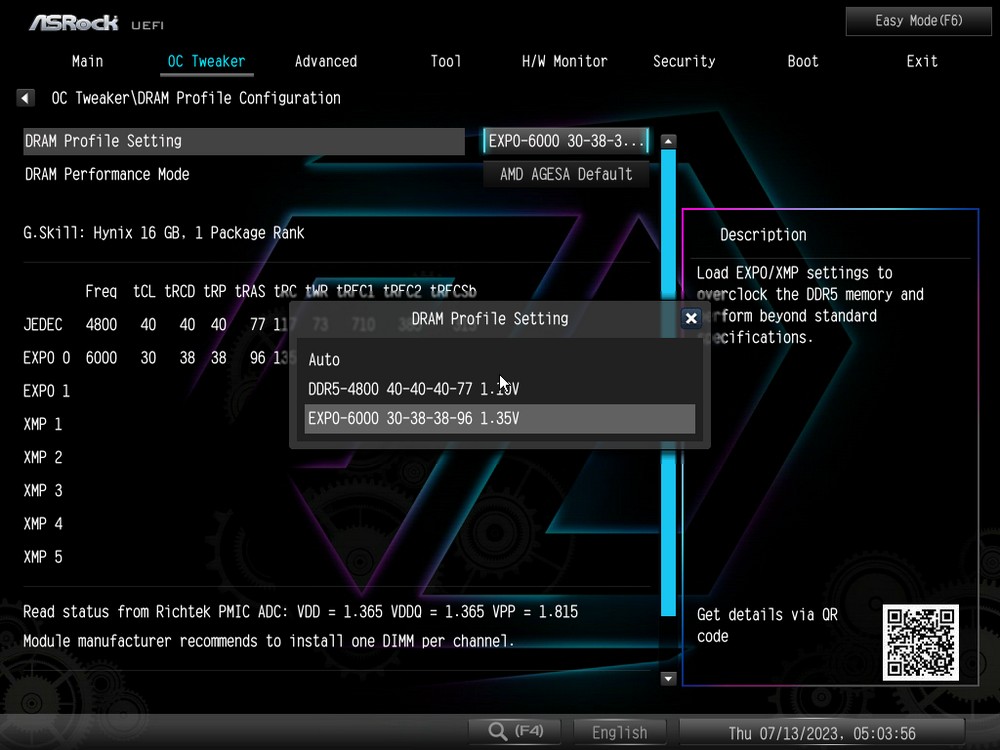
The advanced settings comprise CPU configurations, PCI settings—which come with the Re-Size BAR function enabled by default—and onboard device settings.
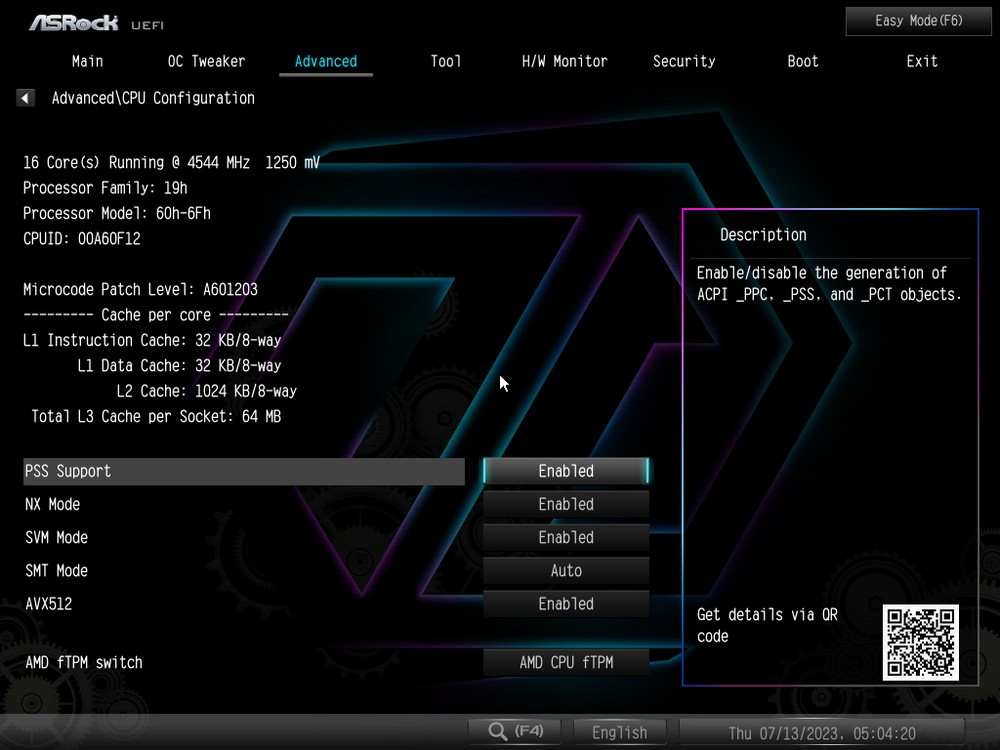
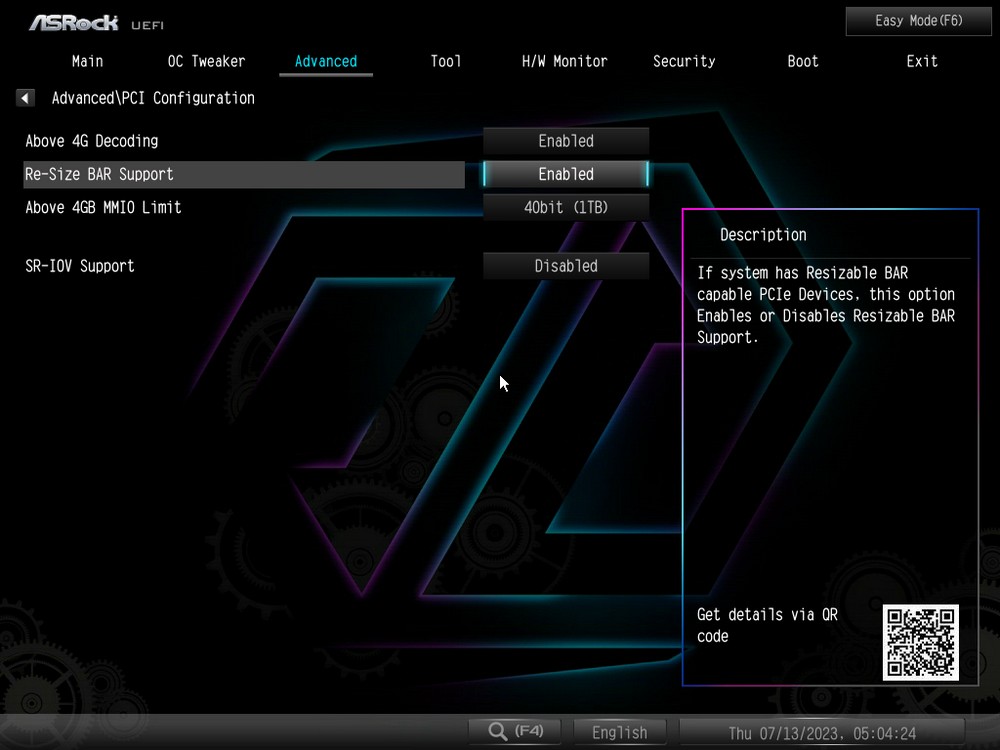
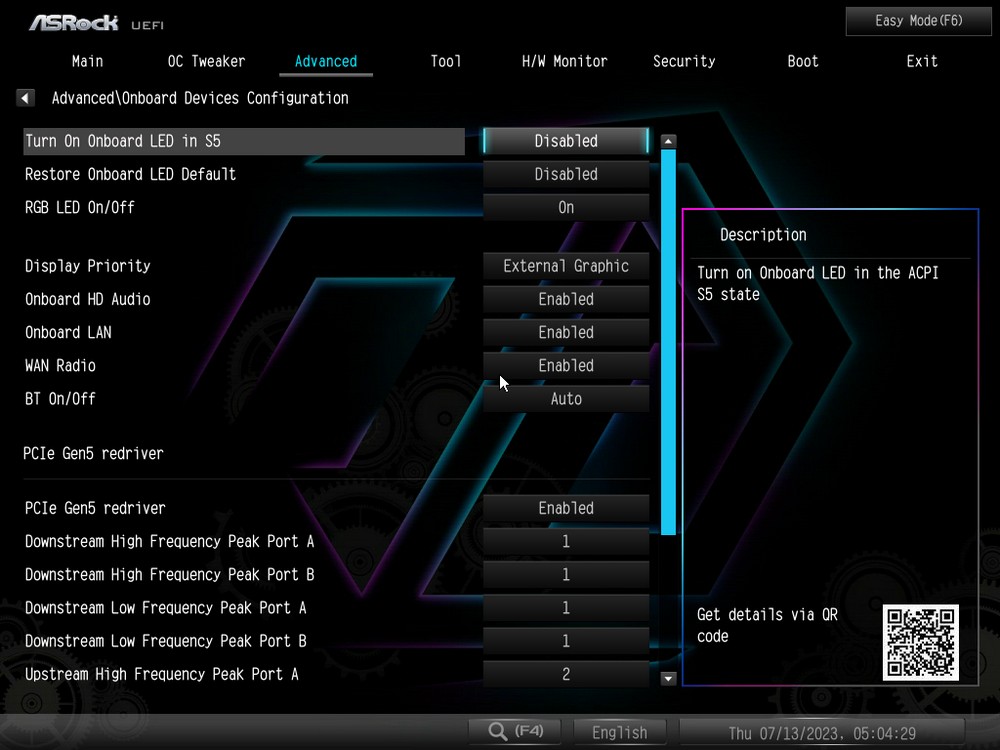
The tool page of the B650E Taichi Lite’s BIOS offers functionalities for adjusting RGB LED settings, as well as utilities such as SSD Secure Erase and NVME Sanitization.
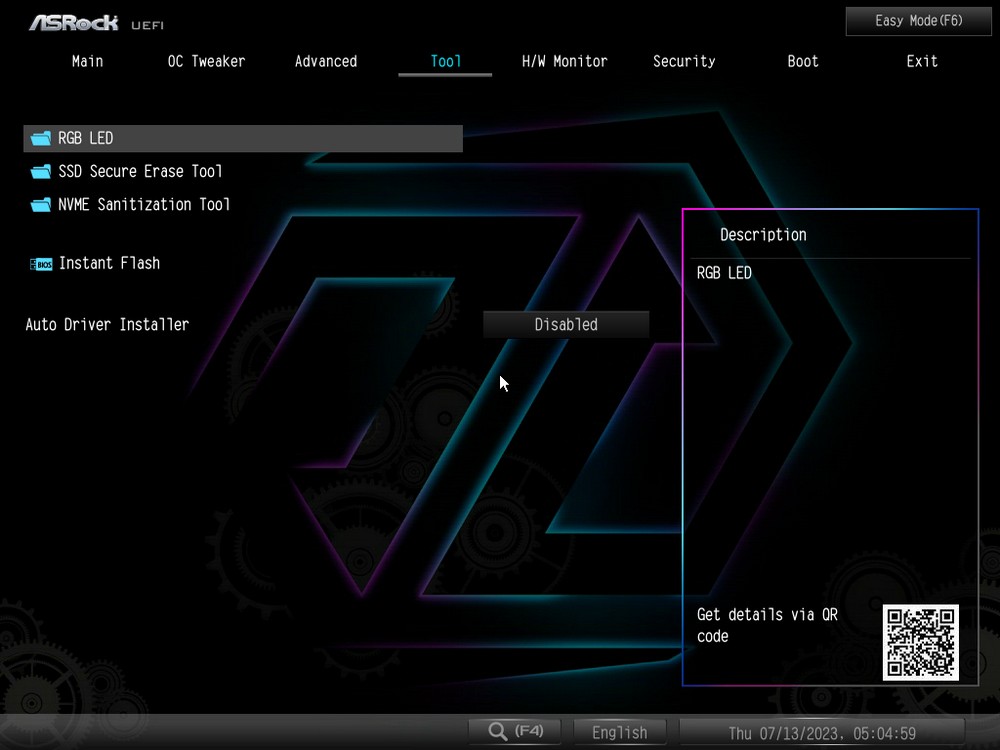
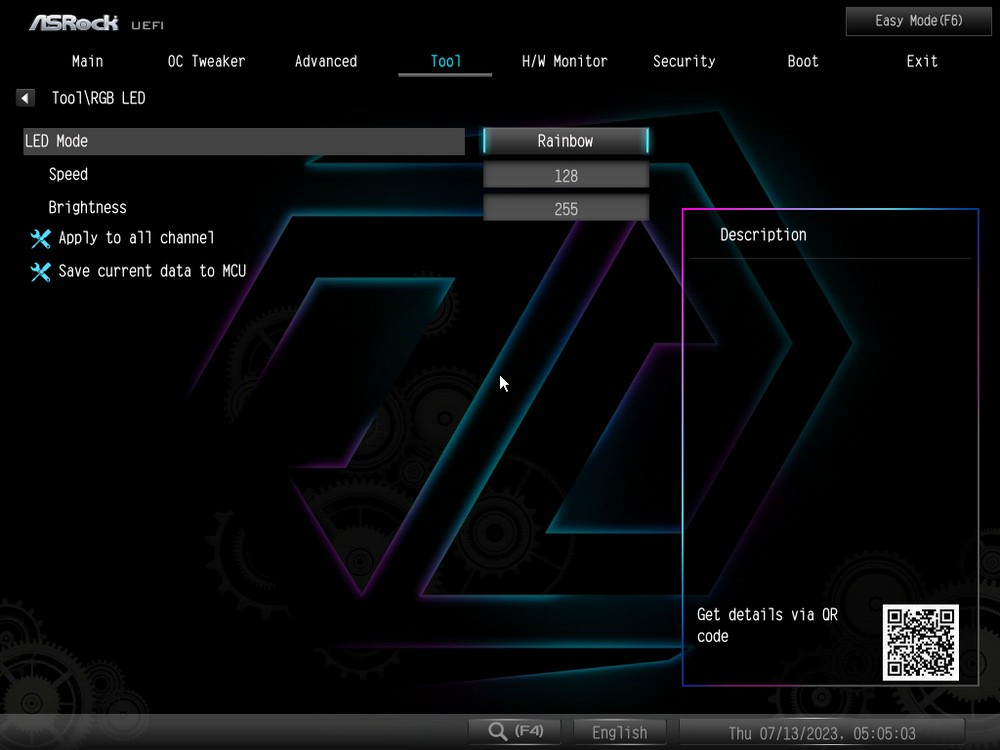
The monitoring page provides details including CPU, motherboard, MOS temperatures, fan speeds, voltages, and more. Users have the option to personally customize the default mode for each FAN socket.
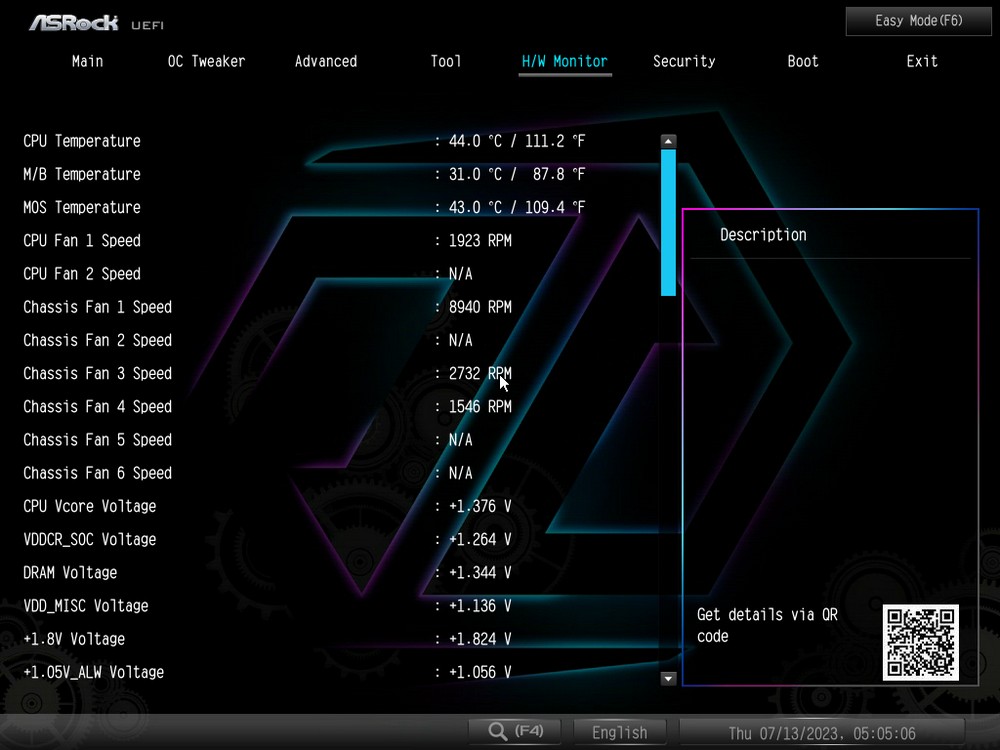
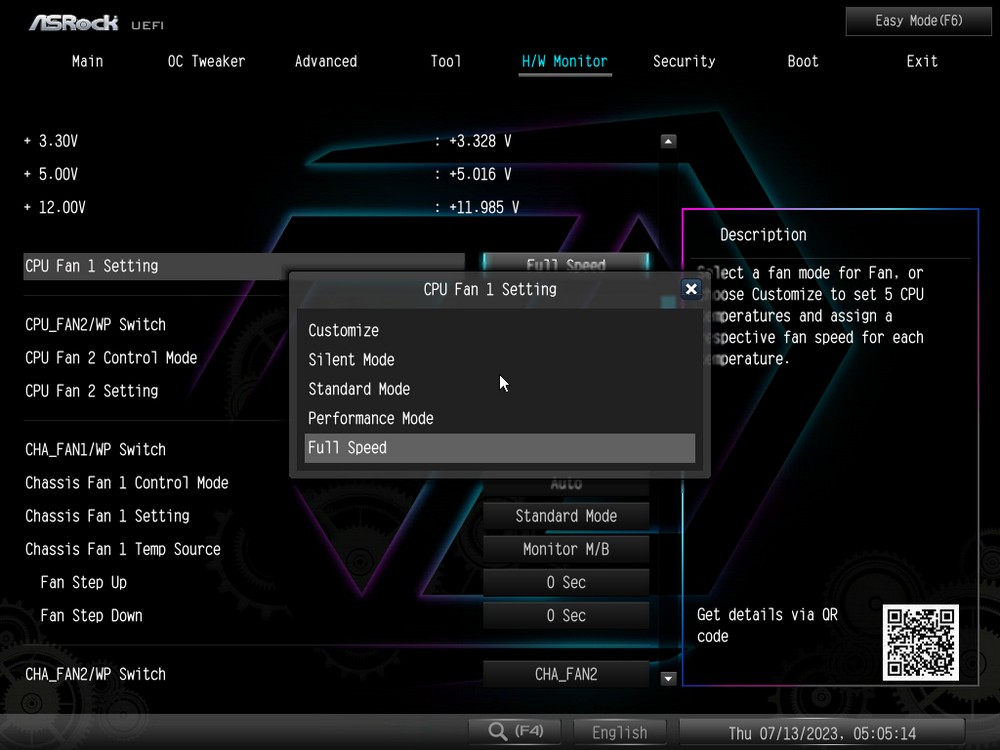
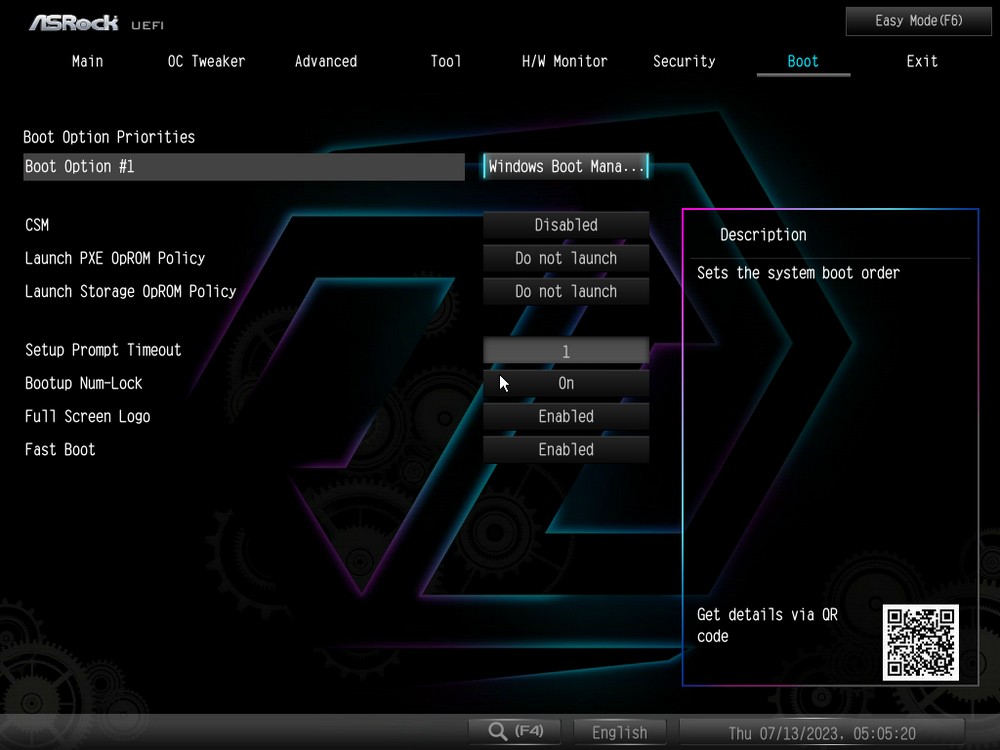
Auto Driver Installer / A-Tuning / Blazing OC Tuner
From a software perspective, after the initial system installation, the ASRock motherboard will automatically prompt you to decide whether to install the Auto Driver Installer software. This software automatically lists the drivers that need to be installed and will remove the Auto Driver Installer applet once the installation is complete. This offers users a relatively clean and uncluttered new system.
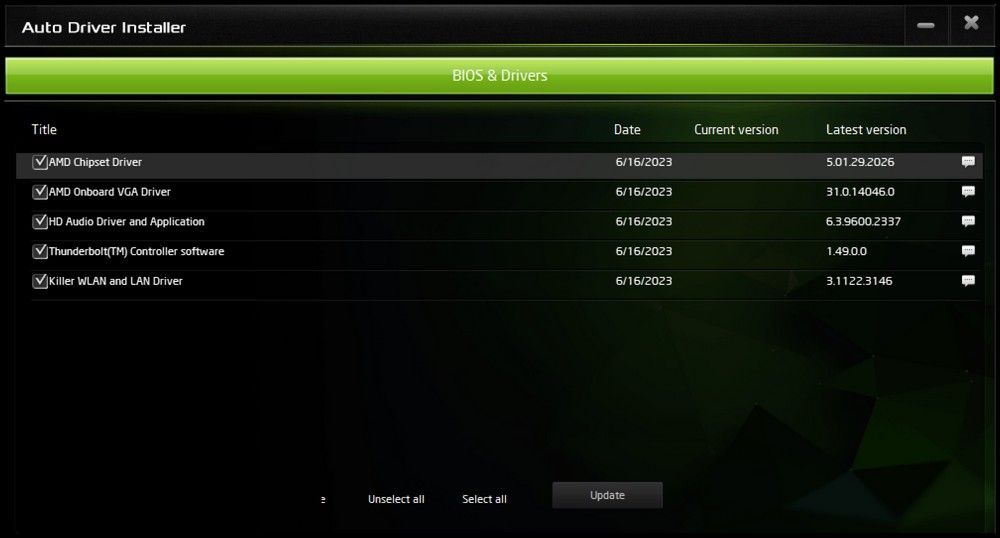
The A-Tuning software offers various functionalities, such as computer performance mode switching, OC Tweaker software overclocking, System Info, and fan tuning. This enables users to directly access CPU overclocking and fan speed adjustment features through the software.
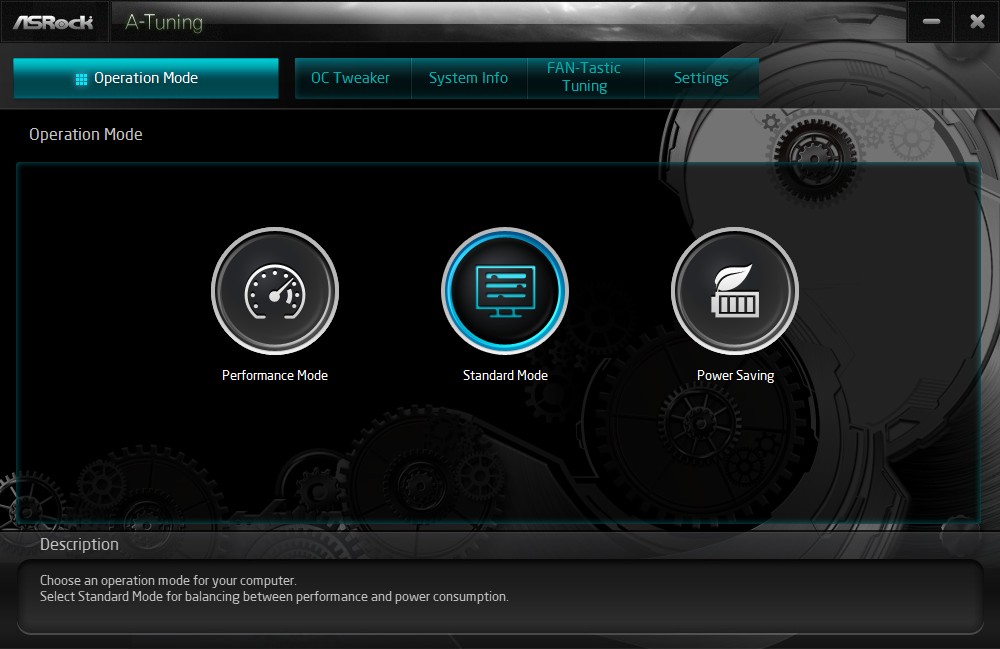
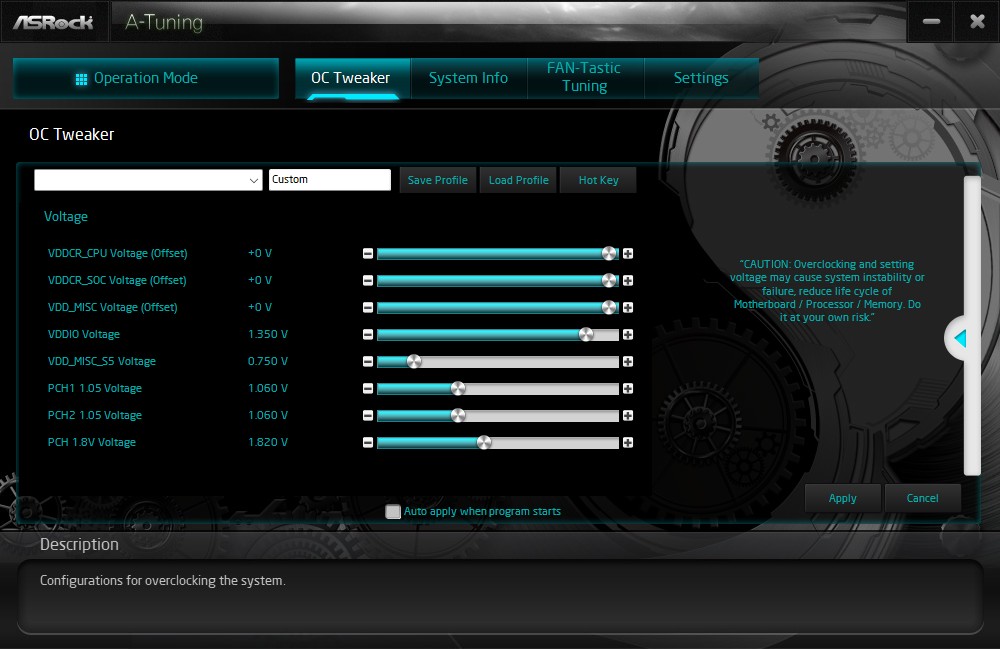
Blazing OC Tuner is an overclocking mechanism that automatically toggles between OC and PBO based on the OC current upper limit and temperature upper limit. During the setup, users are required to perform their own tests and adjust the configuration based on the CPU clock, voltage, and current changes. This ensures that users can enjoy the high performance of full-core OC and the single-core performance of the PBO automatic boost simultaneously.
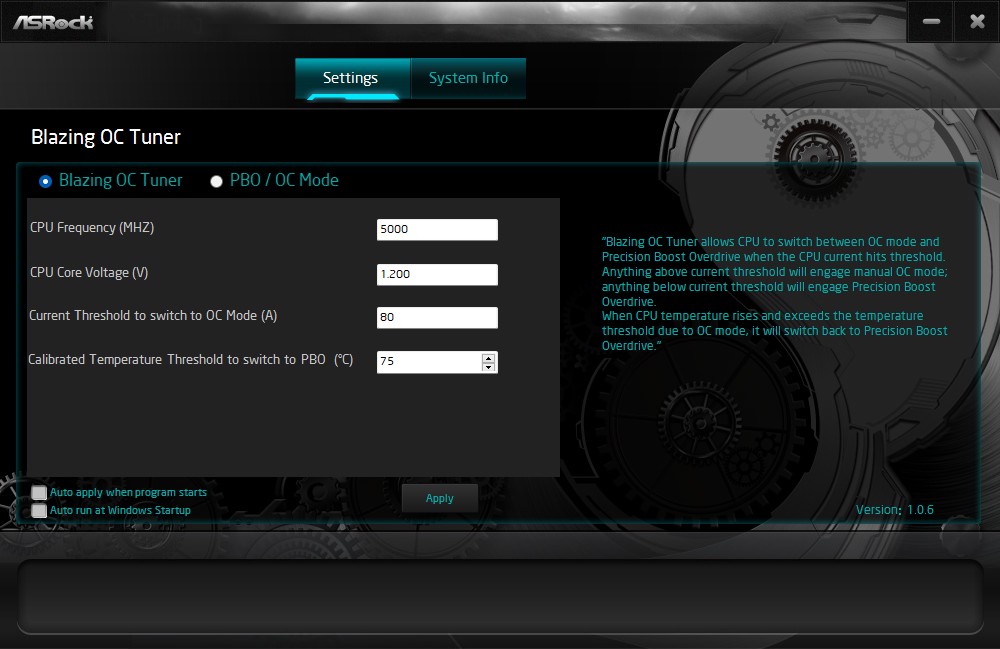
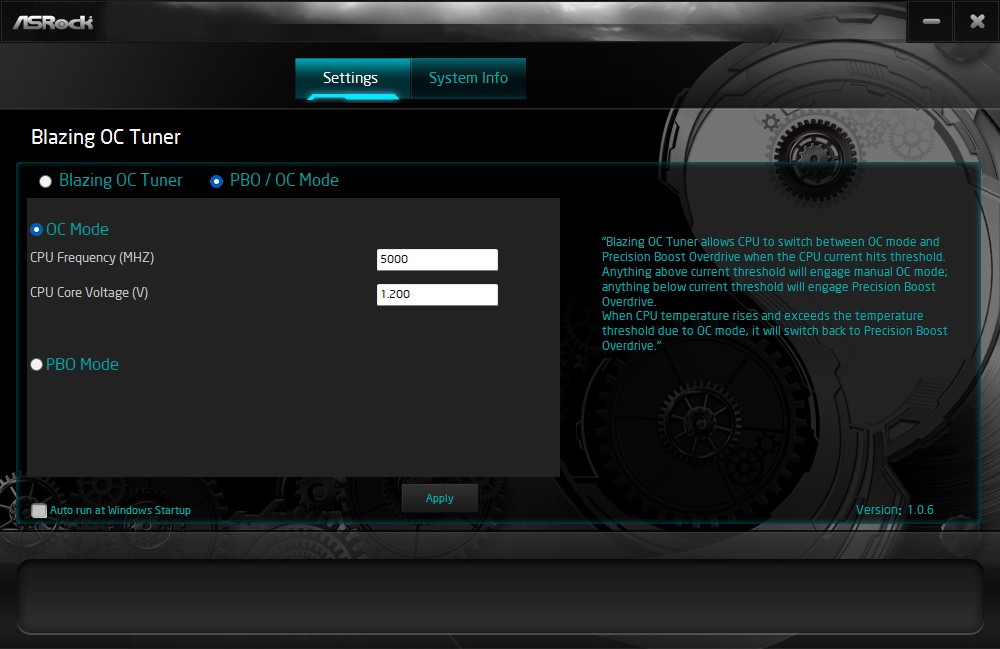
ASRock B650E Taichi Lite Motherboard Performance Test
For performance testing, several common CPU rendering, computer performance tests, and game performance benchmarks are utilized. The system setup involves an AMD Ryzen 9 7950X processor, G.Skill DDR5 16GBx2 6000MHz memory, an NVIDIA GeForce RTX 4090 graphics card, and a Crucial T700 Pro SSD as the system drive. The settings are configured with PBO Enabled and cooling is handled by a 280mm AIO water cooler. The scores provided below are for your reference.
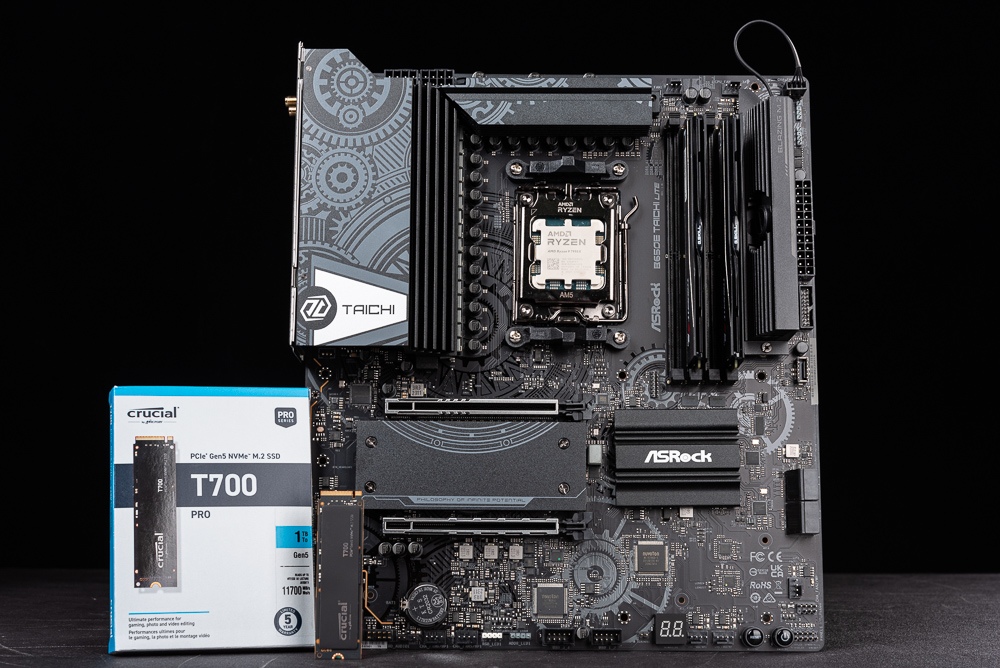
Test Platform Specifications:
- Processor: AMD Ryzen 9 7950X
- Motherboard: ASRock B650E Taichi Lite
- Memory: G.Skill DDR5 16GBx2 6000MHz
- Graphics Card: NVIDIA GeForce RTX 4090
- System Disk: Crucial T700 Pro SSD
- Cooling: 280mm AIO Liquid Cooling Radiator
- Power Supply: Seasonic FOCUS GX-750W ATX 3.0
- Operating System: Windows 11 Pro 22H2
Utilizing CPU-Z to view the AMD Ryzen 9 7950X processor information, this chip is code-named Raphael and is a 16-core, 32-thread processor based on a 5nm process. The tests are conducted on the ASRock B650E Taichi Lite motherboard, with BIOS 1.27, and the memory configuration is dual-channel DDR5 16GBx2 operating at 6000MHz.
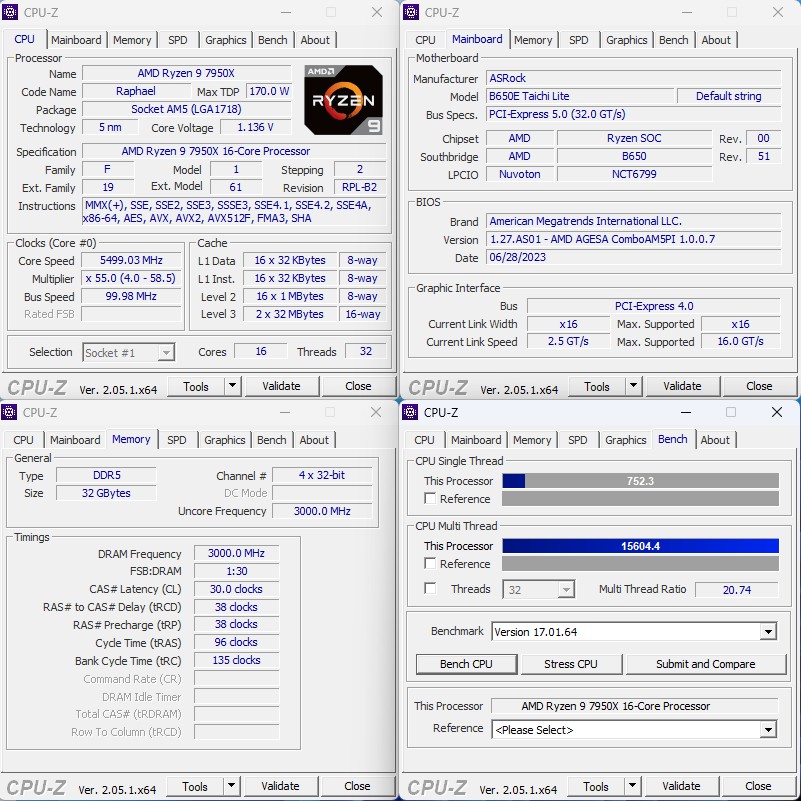
CINEBENCH R20 and R23, developed by MAXON, are based on Cinema 4D and serve as tools to evaluate the 3D graphics performance of computer processors. These benchmarks are widely used in current evaluations of CPU computational performance.
In testing, the 7950X achieved a CPU score of 14829 points on the R20 version, while on the R23 version, it scored 37327 points. As for single-core performance, the processor achieved scores of 758 and 1957 points on the R20 and R23 versions respectively.
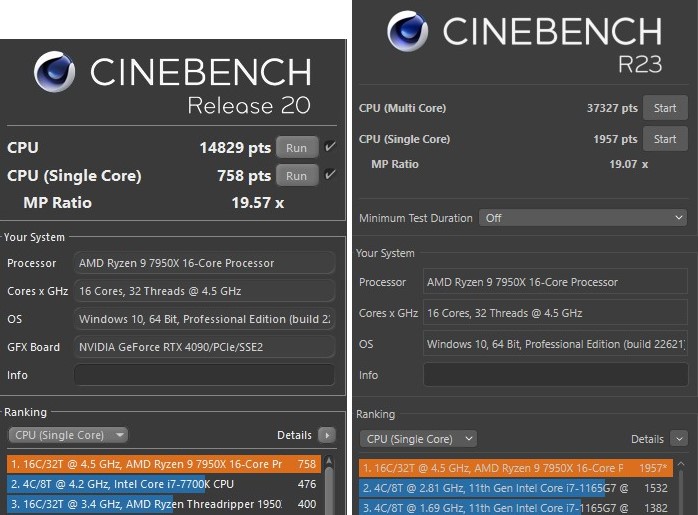
In the AIDA64 memory and cache test, which was performed using G.Skill DDR5 16GBx2 6000MHz memory on the B650E Taichi Lite motherboard, the memory read speed was recorded at 74881 MB/s, the write speed at 76792 MB/s, and the copy speed at 69158 MB/s. The latency was noted to be 68.0 nanoseconds.
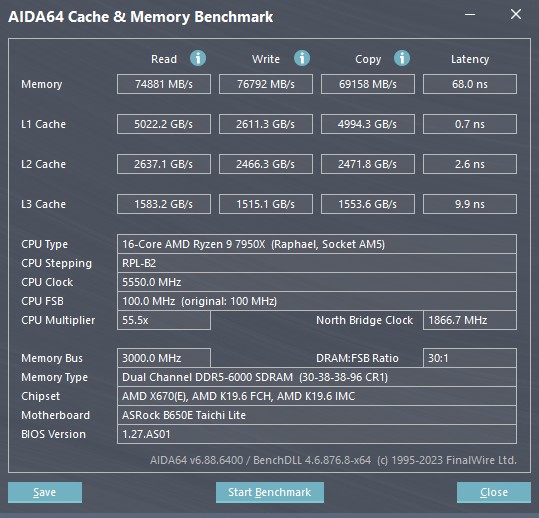
The Geekbench 6 CPU test, which uses comprehensive assessments such as data compression, image processing, machine learning, and code compilation, is commonly used to estimate a processor’s single-core and multi-core performance.
In the Geekbench 6 CPU test, the 7950X achieved a multi-core score of 19118 and a single-core score of 2850.
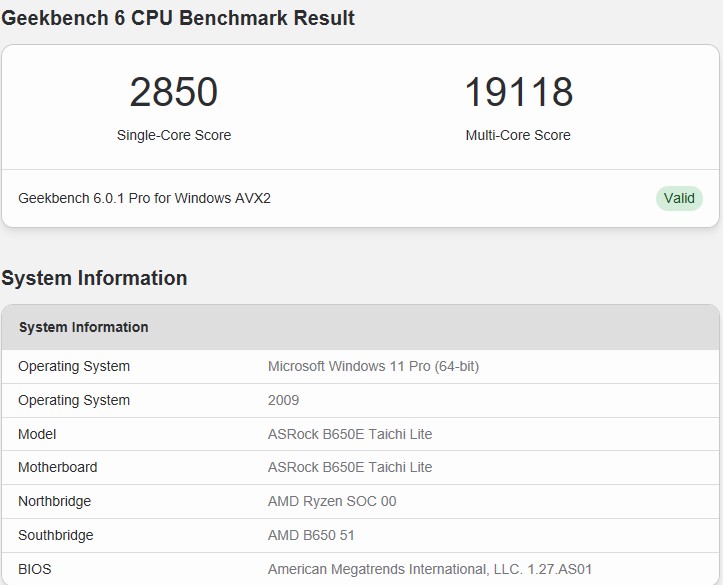
The overall performance of the computer was tested with PCMark 10. This benchmark provides scores for basic computer tasks under its Essentials category, which include app startup speed, video conferencing, and web browsing performance. The Productivity category tests operations such as spreadsheets and writing, whereas the Digital Content Creation category tests photo/video editing, rendering, and visualization capabilities.
The 7950X achieved an overall score of 9955 points in the PCMark 10 test. This score indicates that the processor can undoubtedly meet basic computing needs such as office tasks and internet browsing. For general computer work, it scored 12268 points, for productivity tasks it scored 11546 points, and for digital content creation, it amassed 18900 points. The highest CPU clock speed recorded during the test was 5.74GHz.
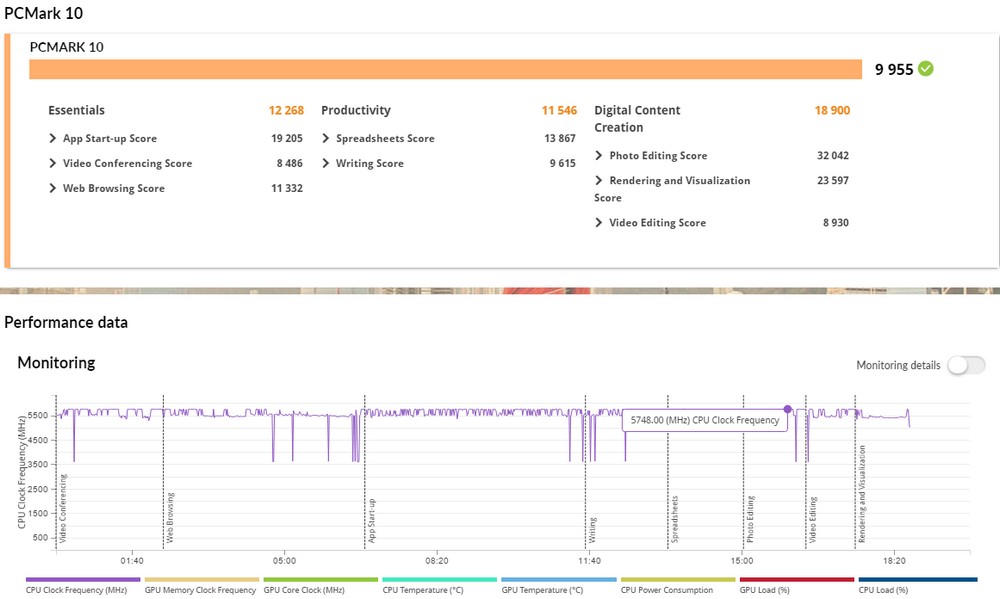
The Crucial T700 Pro 1TB, a PCIe 5.0 SSD, was tested as the system disk. It achieved sequential read and write performances of 11633 MB/s and 9578 MB/s respectively. Coupled with the ASRock M.2 fan radiator, the SSD’s temperature was maintained around 58°C during tests and general system usage, peaking at 61°C during testing.
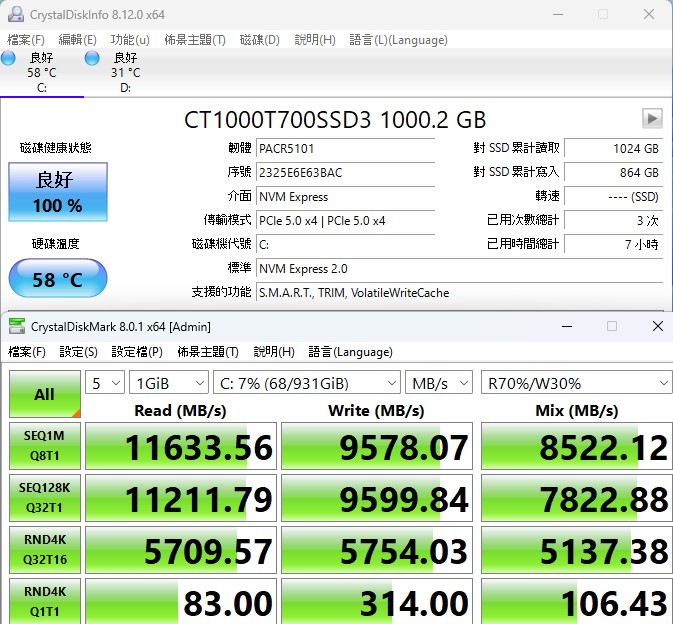
The B650E Taichi Lite features one USB 4 Type-C port. This port utilizes the Intel JHL8340 Thunderbolt 4 controller for its hardware, although it’s typically referred to as USB4 in specifications and marketing materials (though it hasn’t been officially certified as such). Since there are currently no USB4 SSDs on the market, a Thunderbolt 3 SSD was used for testing, reaching impressive transfer speeds of 2856 MB/s. This result demonstrates that users can benefit from the high-speed 40Gbps transmission capacity of USB4.
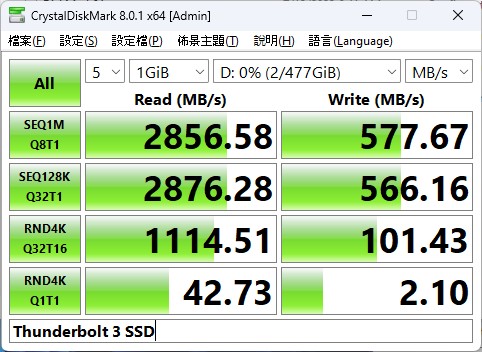
Summarize
The ASRock B650E Taichi Lite reflects the manufacturer’s intent to deliver a high-standard, cost-effective product. By forgoing the original luxurious heat sink, RGB, and metal backplate, ASRock managed to reduce the cost of the motherboard significantly while maintaining top-tier features found in the original model such as USB Type-C, PCIe 5.0, 3 M.2 slots, and 2.5GbE + Wi-Fi 6E connectivity.
Even though the VRM heat sink has been replaced with a more simplistic aluminum extrusion design, the motherboard’s robust 24-phase power delivery and 8-Layer PCB design ensure that VRM temperatures are well-managed even under stress tests. While the motherboard includes basic M.2 heat sinks, users are advised to purchase a higher-quality heat sink for better cooling performance if they plan to use a PCIe 5.0 SSD – for instance, the M.2 fan heat sink offered by ASRock.
However, with a suggested retail price of NT$10,890 in Taiwan, it would be even more attractive if it could be sold under NT$10,000. If you’re after flagship motherboard features but are not ready to upgrade to the X670E Taichi, the B650E Taichi Lite is an excellent choice for a high-end motherboard that balances performance and price. While aesthetics can be subjective, the true value of a motherboard lies in its specifications and performance, which the B650E Taichi Lite delivers in spades.
If this article is helpful for you, please share this article with your friends on social media. Thank you!
This article is based on the personality of the reviews. You are responsible for fact-checking if the contents are not facts or accurate.
Title: Examining the ASRock B650E Taichi Lite: A cost-effective update without compromising on design and specifications